391 papers:
 CASE-2015-BlanchiniFGP #programming
CASE-2015-BlanchiniFGP #programming- Inverse kinematics by means of convex programming: Some developments (FB, GF, GG, FAP), pp. 515–520.
 CASE-2015-ChangL #algorithm #fuzzy #image
CASE-2015-ChangL #algorithm #fuzzy #image- A fuzzy weighted mean aggregation algorithm for color image impulse noise removal (JYC, PCL), pp. 1268–1273.
 CASE-2015-LinHK #algorithm #fuzzy #image #segmentation
CASE-2015-LinHK #algorithm #fuzzy #image #segmentation- A noise- and size-insensitive integrity-based fuzzy c-means algorithm for image segmentation (PLL, PWH, CHK), pp. 1282–1287.
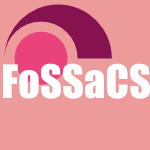 FoSSaCS-2015-Velner #decidability #game studies #multi #robust
FoSSaCS-2015-Velner #decidability #game studies #multi #robust- Robust Multidimensional Mean-Payoff Games are Undecidable (YV), pp. 312–327.
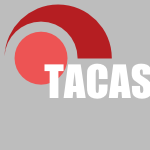 TACAS-2015-BrazdilCFK #multi #named #synthesis
TACAS-2015-BrazdilCFK #multi #named #synthesis- MultiGain: A Controller Synthesis Tool for MDPs with Multiple Mean-Payoff Objectives (TB, KC, VF, AK), pp. 181–187.
 STOC-2015-CohenEMMP #approximate #clustering #rank #reduction
STOC-2015-CohenEMMP #approximate #clustering #rank #reduction- Dimensionality Reduction for k-Means Clustering and Low Rank Approximation (MBC, SE, CM, CM, MP), pp. 163–172.
 CSCW-2015-KimL #comprehension #mobile
CSCW-2015-KimL #comprehension #mobile- Dwelling Places in KakaoTalk: Understanding the Roles and Meanings of Chatrooms in Mobile Instant Messengers (DjK, YKL), pp. 775–784.
 DUXU-UI-2015-WiedauGFGW #communication #named
DUXU-UI-2015-WiedauGFGW #communication #named- Commiticator: Enhancing Non-verbal Communication by Means of Magnetic Vision (AW, DG, RF, TG, MW), pp. 705–714.
 HIMI-IKC-2015-UeokaI #development
HIMI-IKC-2015-UeokaI #development- Development of the Horror Emotion Amplification System by Means of Biofeedback Method (RU, KI), pp. 657–665.
 ICML-2015-BachemLK #estimation #parametricity
ICML-2015-BachemLK #estimation #parametricity- Coresets for Nonparametric Estimation — the Case of DP-Means (OB, ML, AK), pp. 209–217.
 ICML-2015-DingZSMM #consistency
ICML-2015-DingZSMM #consistency- Yinyang K-Means: A Drop-In Replacement of the Classic K-Means with Consistent Speedup (YD, YZ, XS, MM, TM), pp. 579–587.
 ICML-2015-HugginsNSM #markov #named #process
ICML-2015-HugginsNSM #markov #named #process- JUMP-Means: Small-Variance Asymptotics for Markov Jump Processes (JHH, KN, AS, VKM), pp. 693–701.
 ICML-2015-TristanTS #estimation #gpu #performance
ICML-2015-TristanTS #estimation #gpu #performance- Efficient Training of LDA on a GPU by Mean-for-Mode Estimation (JBT, JT, GLSJ), pp. 59–68.
 MoDELS-J-2011-Steimann15 #refactoring
MoDELS-J-2011-Steimann15 #refactoring- From well-formedness to meaning preservation: model refactoring for almost free (FS), pp. 307–320.
 MoDELS-J-2011-Steimann15 #refactoring
MoDELS-J-2011-Steimann15 #refactoring- From well-formedness to meaning preservation: model refactoring for almost free (FS), pp. 307–320.
 MoDELS-2015-VallejoKMB #case study #reuse #symmetry
MoDELS-2015-VallejoKMB #case study #reuse #symmetry- Improving reuse by means of asymmetrical model migrations: An application to the Orcc case study (PV, MK, KJMM, JPB), pp. 358–367.
 SAC-2015-HendersonGE #clustering #empirical #named #parametricity #performance #probability
SAC-2015-HendersonGE #clustering #empirical #named #parametricity #performance #probability- EP-MEANS: an efficient nonparametric clustering of empirical probability distributions (KH, BG, TER), pp. 893–900.
 SPLC-2015-FontBHC #automation #formal method #product line #variability
SPLC-2015-FontBHC #automation #formal method #product line #variability- Automating the variability formalization of a model family by means of common variability language (JF, MB, ØH, CC), pp. 411–418.
 CAV-2015-BrenguierR #game studies #multi
CAV-2015-BrenguierR #game studies #multi- Pareto Curves of Multidimensional Mean-Payoff Games (RB, JFR), pp. 251–267.
 CSL-2015-BrotherstonV #logic
CSL-2015-BrotherstonV #logic- Sub-classical Boolean Bunched Logics and the Meaning of Par (JB, JV), pp. 325–342.
 LICS-2015-ChatterjeeKK #markov #multi #process
LICS-2015-ChatterjeeKK #markov #multi #process- Unifying Two Views on Multiple Mean-Payoff Objectives in Markov Decision Processes (KC, ZK, JK), pp. 244–256.
 LICS-2015-ClementeR #multi #problem #worst-case
LICS-2015-ClementeR #multi #problem #worst-case- Multidimensional beyond Worst-Case and Almost-Sure Problems for Mean-Payoff Objectives (LC, JFR), pp. 257–268.
 SIGMOD-2014-KargarACGSY #database #keyword #named #relational
SIGMOD-2014-KargarACGSY #database #keyword #named #relational- MeanKS: meaningful keyword search in relational databases with complex schema (MK, AA, NC, PG, JS, XY), pp. 905–908.
 FoSSaCS-2014-Chatterjee0GO #game studies #probability
FoSSaCS-2014-Chatterjee0GO #game studies #probability- Perfect-Information Stochastic Mean-Payoff Parity Games (KC, LD, HG, YO), pp. 210–225.
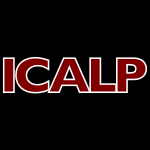 ICALP-v1-2014-AllamigeonBG #algorithm #game studies #polynomial
ICALP-v1-2014-AllamigeonBG #algorithm #game studies #polynomial- The Tropical Shadow-Vertex Algorithm Solves Mean Payoff Games in Polynomial Time on Average (XA, PB, SG), pp. 89–100.
 ICALP-v2-2014-ChatterjeeI #complexity #game studies
ICALP-v2-2014-ChatterjeeI #complexity #game studies- The Complexity of Ergodic Mean-payoff Games (KC, RIJ), pp. 122–133.
 CHI-2014-HarveyGS #human-computer
CHI-2014-HarveyGS #human-computer- HCI as a means to prosociality in the economy (JH, DG, AS), pp. 2955–2964.
 CSCW-2014-PreistMC #volunteer
CSCW-2014-PreistMC #volunteer- Competing or aiming to be average?: normification as a means of engaging digital volunteers (CP, EM, DC), pp. 1222–1233.
 DUXU-DI-2014-PaulinBA #case study #experience #user interface
DUXU-DI-2014-PaulinBA #case study #experience #user interface- The Study of the Relations between the BrainHex Player Profiles, MBTI Psychological Types and Emotions as Means to Enhance User Experience (REP, ALB, MMA), pp. 732–741.
 DUXU-ELAS-2014-JoshiW #collaboration #empirical
DUXU-ELAS-2014-JoshiW #collaboration #empirical- A Collaborative Change Experiment: Telecare as a Means for Delivery of Home Care Services (SGJ, AW), pp. 141–151.
 DUXU-TMT-2014-CoventryBJM #behaviour #named #security
DUXU-TMT-2014-CoventryBJM #behaviour #named #security- SCENE: A Structured Means for Creating and Evaluating Behavioral Nudges in a Cyber Security Environment (LMC, PB, DJ, APAvM), pp. 229–239.
 HCI-AIMT-2014-SunLF #comprehension #memory management
HCI-AIMT-2014-SunLF #comprehension #memory management- The Effects of Working Memory Load and Mental Imagery on Metaphoric Meaning Access in Metaphor Comprehension (XS, YL, XF), pp. 502–510.
 HIMI-DE-2014-WinterhollerBCM #adaptation
HIMI-DE-2014-WinterhollerBCM #adaptation- Information Coding by Means of Adaptive Controlling Torques (JW, JB, KC, TM), pp. 271–280.
 LCT-TRE-2014-IshikawaAKSTD #learning #process #self #student
LCT-TRE-2014-IshikawaAKSTD #learning #process #self #student- Sustaining Outside-of-Class CALL Activities by Means of a Student Self-Evaluation System in a University Blended Learning EFL Course (YI, RAY, MK, CS, YT, MD), pp. 146–154.
 HILT-2014-Seidewitz #execution #modelling #uml
HILT-2014-Seidewitz #execution #modelling #uml- UML with meaning: executable modeling in foundational UML and the Alf action language (ES), pp. 61–68.
 ICML-c1-2014-IyerNS #bound #convergence #estimation #kernel
ICML-c1-2014-IyerNS #bound #convergence #estimation #kernel- Maximum Mean Discrepancy for Class Ratio Estimation: Convergence Bounds and Kernel Selection (AI, SN, SS), pp. 530–538.
 ICML-c1-2014-MuandetFSGS #estimation #kernel
ICML-c1-2014-MuandetFSGS #estimation #kernel- Kernel Mean Estimation and Stein Effect (KM, KF, BKS, AG, BS), pp. 10–18.
 ICML-c2-2014-HsuS
ICML-c2-2014-HsuS- Heavy-tailed regression with a generalized median-of-means (DH, SS), pp. 37–45.
 ICML-c2-2014-NieYH #analysis #component #robust
ICML-c2-2014-NieYH #analysis #component #robust- Optimal Mean Robust Principal Component Analysis (FN, JY, HH), pp. 1062–1070.
 ICML-c2-2014-VinnikovS #component #independence
ICML-c2-2014-VinnikovS #component #independence- K-means recovers ICA filters when independent components are sparse (AV, SSS), pp. 712–720.
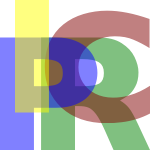 ICPR-2014-ChenSPS #detection #energy #statistics
ICPR-2014-ChenSPS #detection #energy #statistics- Statistical Anomaly Detection in Mean and Variation of Energy Consumption (BC, MS, JP, AS), pp. 3570–3575.
 ICPR-2014-Dahllof #classification
ICPR-2014-Dahllof #classification- Scribe Attribution for Early Medieval Handwriting by Means of Letter Extraction and Classification and a Voting Procedure for Larger Pieces (MD), pp. 1910–1915.
 ICPR-2014-KarM #fuzzy #using
ICPR-2014-KarM #fuzzy #using- Extraction of Retinal Blood Vessel Using Curvelet Transform and Fuzzy C-Means (SSK, SPM), pp. 3392–3397.
 ICPR-2014-MehnertMSMB #approach
ICPR-2014-MehnertMSMB #approach- A Structural Texture Approach for Characterising Malignancy Associated Changes in Pap Smears Based on Mean-Shift and the Watershed Transform (AM, RM, KS, PM, EB), pp. 1189–1193.
 ICPR-2014-NayefGO #documentation #image
ICPR-2014-NayefGO #documentation #image- Deblurring of Document Images Based on Sparse Representations Enhanced by Non-local Means (NN, PGK, JMO), pp. 4441–4446.
 ICPR-2014-PedersenNM #adaptation #algorithm #estimation
ICPR-2014-PedersenNM #adaptation #algorithm #estimation- Adaptive Non-local Means for Cost Aggregation in a Local Disparity Estimation Algorithm (CP, KN, TBM), pp. 2442–2447.
 ICPR-2014-SlitiHBA #analysis #robust #using
ICPR-2014-SlitiHBA #analysis #robust #using- A More Robust Mean Shift Tracker Using Joint Monogenic Signal Analysis and Color Histogram (OS, HH, FB, HA), pp. 2453–2458.
 ICPR-2014-SongLZC #adaptation #performance #using
ICPR-2014-SongLZC #adaptation #performance #using- Scale Adaptive Tracking Using Mean Shift and Efficient Feature Matching (YS, SL, JZ, HC), pp. 2233–2238.
 ICPR-2014-Yasuda #effectiveness
ICPR-2014-Yasuda #effectiveness- Effective Mean-Field Inference Method for Nonnegative Boltzmann Machines (MY), pp. 3600–3605.
 KDIR-2014-SatoNS #classification #kernel #using
KDIR-2014-SatoNS #classification #kernel #using- A Simple Classification Method for Class Imbalanced Data using the Kernel Mean (YS, KN, AS), pp. 327–334.
 Onward-2014-SamimiDOWM #call-by
Onward-2014-SamimiDOWM #call-by- Call by Meaning (HS, CD, YO, AW, TDM), pp. 11–28.
 PPoPP-2014-Rubin #compilation #question #research #what
PPoPP-2014-Rubin #compilation #question #research #what- Heterogeneous computing: what does it mean for compiler research? (NR), pp. 315–316.
 LICS-CSL-2014-Velner #multi #robust #synthesis
LICS-CSL-2014-Velner #multi #robust #synthesis- Finite-memory strategy synthesis for robust multidimensional mean-payoff objectives (YV), p. 10.
 ICDAR-2013-LebourgeoisDGD #documentation #image #performance #segmentation
ICDAR-2013-LebourgeoisDGD #documentation #image #performance #segmentation- Fast Integral MeanShift: Application to Color Segmentation of Document Images (FL, FD, DG, JD), pp. 52–56.
 ICDAR-2013-ZhuZ #detection #image #recognition #using
ICDAR-2013-ZhuZ #detection #image #recognition #using- Label Detection and Recognition for USPTO Images Using Convolutional K-Means Feature Quantization and Ada-Boost (SZ, RZ), pp. 633–637.
 TACAS-2013-BohyBFR #ltl #specification #synthesis
TACAS-2013-BohyBFR #ltl #specification #synthesis- Synthesis from LTL Specifications with Mean-Payoff Objectives (AB, VB, EF, JFR), pp. 169–184.
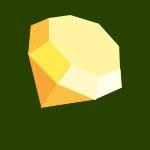 ICSM-2013-Karus #automation #development #identification
ICSM-2013-Karus #automation #development #identification- Automatic Means of Identifying Evolutionary Events in Software Development (SK), pp. 412–415.
 DLT-J-2012-HromkovicKKS13 #automaton #logic #nondeterminism #representation
DLT-J-2012-HromkovicKKS13 #automaton #logic #nondeterminism #representation- Determinism vs. Nondeterminism for Two-Way Automata: Representing the Meaning of States by Logical Formulæ (JH, RK, RK, RS), pp. 955–978.
 ICALP-v1-2013-BorosEGM #algorithm #game studies #probability #pseudo #random
ICALP-v1-2013-BorosEGM #algorithm #game studies #probability #pseudo #random- A Pseudo-Polynomial Algorithm for Mean Payoff Stochastic Games with Perfect Information and a Few Random Positions (EB, KME, VG, KM), pp. 220–231.
 IFM-2013-DemasiCMA #fault tolerance #simulation
IFM-2013-DemasiCMA #fault tolerance #simulation- Characterizing Fault-Tolerant Systems by Means of Simulation Relations (RD, PFC, TSEM, NA), pp. 428–442.
 ICFP-2013-Balabonski
ICFP-2013-Balabonski- Weak optimality, and the meaning of sharing (TB), pp. 263–274.
 CHI-2013-BirnholtzHR #student #twitter
CHI-2013-BirnholtzHR #student #twitter- Tweeting for class: co-construction as a means for engaging students in lectures (JPB, JTH, DR), pp. 797–800.
 CHI-2013-ThiryLBR #authoring #framework #timeline
CHI-2013-ThiryLBR #authoring #framework #timeline- Authoring personal histories: exploring the timeline as a framework for meaning making (ET, SEL, RB, TR), pp. 1619–1628.
 CSCW-2013-HuangDLLG #bound
CSCW-2013-HuangDLLG #bound- Meanings and boundaries of scientific software sharing (XH, XD, CPL, TL, NG), pp. 423–434.
 HIMI-LCCB-2013-BrynielssonJL #communication #design #process #prototype #social #social media #using #video
HIMI-LCCB-2013-BrynielssonJL #communication #design #process #prototype #social #social media #using #video- Using Video Prototyping as a Means to Involve Crisis Communication Personnel in the Design Process: Innovating Crisis Management by Creating a Social Media Awareness Tool (JB, FJ, SL), pp. 559–568.
 OCSC-2013-FardounAC #community #education #network #online #social #student
OCSC-2013-FardounAC #community #education #network #online #social #student- Improvement of Students Curricula in Educational Environments by Means of Online Communities and Social Networks (HMF, AHA, APC), pp. 147–155.
 ICML-c3-2013-Cuturid
ICML-c3-2013-Cuturid- Mean Reversion with a Variance Threshold (MC, Ad), pp. 271–279.
 KDIR-KMIS-2013-NcirE #clustering #on the #question
KDIR-KMIS-2013-NcirE #clustering #on the #question- On the Extension of k-Means for Overlapping Clustering — Average or Sum of Clusters’ Representatives? (CEBN, NE), pp. 208–213.
 KEOD-2013-OimK #comprehension #representation
KEOD-2013-OimK #comprehension #representation- Event Representation in Text Understanding — Transfer of Meaning Structures (HÕ, MK), pp. 367–372.
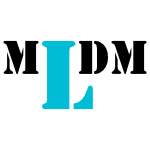 MLDM-2013-DoganBK #algorithm #integration #self
MLDM-2013-DoganBK #algorithm #integration #self- SOM++: Integration of Self-Organizing Map and K-Means++ Algorithms (YD, DB, AK), pp. 246–259.
 ER-BR-2013-Finkelstein #re-engineering #what
ER-BR-2013-Finkelstein #re-engineering #what- The Next 10 Years: the shape of software to come and what if means for software engineering (AF).
 SAC-2013-SenatoreP #collaboration #concept analysis #fuzzy #navigation
SAC-2013-SenatoreP #collaboration #concept analysis #fuzzy #navigation- Lattice navigation for collaborative filtering by means of (fuzzy) formal concept analysis (SS, GP), pp. 920–926.
 ESEC-FSE-2013-SilicDS #clustering #predict #reliability #web #web service
ESEC-FSE-2013-SilicDS #clustering #predict #reliability #web #web service- Prediction of atomic web services reliability based on k-means clustering (MS, GD, SS), pp. 70–80.
 CSL-2013-Tendera
CSL-2013-Tendera- Means and Limits of Decision (Invited Talk) (LT), pp. 28–29.
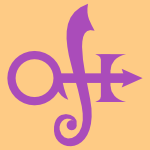 ASE-2012-Nogueira #complexity #predict #testing
ASE-2012-Nogueira #complexity #predict #testing- Predicting software complexity by means of evolutionary testing (AFN), pp. 402–405.
 VLDB-2012-BahmaniMVKV #scalability
VLDB-2012-BahmaniMVKV #scalability- Scalable K-Means++ (BB, BM, AV, RK, SV), pp. 622–633.
 WCRE-2012-CleveH #question #what
WCRE-2012-CleveH #question #what- What Do Foreign Keys Actually Mean? (AC, JLH), pp. 299–307.
 DLT-2012-HromkovicKKS #automaton #logic #nondeterminism #representation
DLT-2012-HromkovicKKS #automaton #logic #nondeterminism #representation- Determinism vs. Nondeterminism for Two-Way Automata — Representing the Meaning of States by Logical Formulæ (JH, RK, RK, RS), pp. 24–39.
 ICALP-v1-2012-LeviRR #testing
ICALP-v1-2012-LeviRR #testing- Testing Similar Means (RL, DR, RR), pp. 629–640.
 ICALP-v2-2012-Velner #automaton #complexity
ICALP-v2-2012-Velner #automaton #complexity- The Complexity of Mean-Payoff Automaton Expression (YV), pp. 390–402.
 ICML-2012-GrunewalderLGBPP
ICML-2012-GrunewalderLGBPP- Conditional mean embeddings as regressors (SG, GL, AG, LB, SP, MP), p. 234.
 ICML-2012-KulisJ #algorithm
ICML-2012-KulisJ #algorithm- Revisiting k-means: New Algorithms via Bayesian Nonparametrics (BK, MIJ), p. 148.
 ICML-2012-YuS #analysis #kernel
ICML-2012-YuS #analysis #kernel- Analysis of Kernel Mean Matching under Covariate Shift (YY, CS), p. 150.
 ICPR-2012-AyechZ #clustering #feature model #image #modelling #segmentation #statistics
ICPR-2012-AyechZ #clustering #feature model #image #modelling #segmentation #statistics- Terahertz image segmentation based on K-harmonic-means clustering and statistical feature extraction modeling (MWA, DZ), pp. 222–225.
 ICPR-2012-ChaudhuriM #on the
ICPR-2012-ChaudhuriM #on the- On the relation between K-means and PLSA (ARC, MNM), pp. 2298–2301.
 ICPR-2012-ChenS #multi
ICPR-2012-ChenS #multi- Bone suppression in chest radiographs by means of anatomically specific multiple massive-training ANNs (SC, KS), pp. 17–20.
 ICPR-2012-Havens #approximate #kernel #streaming
ICPR-2012-Havens #approximate #kernel #streaming- Approximation of kernel k-means for streaming data (TCH), pp. 509–512.
 ICPR-2012-HuangHHLJW #representation
ICPR-2012-HuangHHLJW #representation- Face hallucination via K-selection mean constrained sparse representation (KH, RH, ZH, TL, JJ, FW), pp. 882–885.
 ICPR-2012-LiVBB #clustering #learning #using
ICPR-2012-LiVBB #clustering #learning #using- Feature learning using Generalized Extreme Value distribution based K-means clustering (ZL, OV, HB, RB), pp. 1538–1541.
 ICPR-2012-NielsenLYV #matrix
ICPR-2012-NielsenLYV #matrix- Jensen divergence based SPD matrix means and applications (FN, ML, XY, BCV), pp. 2841–2844.
 ICPR-2012-SerratosaCS #graph #interactive
ICPR-2012-SerratosaCS #graph #interactive- Interactive graph matching by means of imposing the pairwise costs (FS, XC, ASR), pp. 1298–1301.
 KDD-2012-LiuA #clustering #data flow #web
KDD-2012-LiuA #clustering #data flow #web- Stratified k-means clustering over a deep web data source (TL, GA), pp. 1113–1121.
 KMIS-2012-VanharantaK #ontology
KMIS-2012-VanharantaK #ontology- Strategy Needs Structure — Structure Needs Ontologies — Dynamic Ontologies Carry Meanings (HV, JK), pp. 261–264.
 MLDM-2012-ForczmanskiF #classification #distance #representation
MLDM-2012-ForczmanskiF #classification #distance #representation- Classification of Elementary Stamp Shapes by Means of Reduced Point Distance Histogram Representation (PF, DF), pp. 603–616.
 MLDM-2012-Moreira-MatiasMGB #categorisation #classification #matrix #using
MLDM-2012-Moreira-MatiasMGB #categorisation #classification #matrix #using- Text Categorization Using an Ensemble Classifier Based on a Mean Co-association Matrix (LMM, JMM, JG, PB), pp. 525–539.
 MLDM-2012-VlaseMI #clustering #metadata #using
MLDM-2012-VlaseMI #clustering #metadata #using- Improvement of K-means Clustering Using Patents Metadata (MV, DM, AI), pp. 293–305.
 RE-2012-MaglyasNS #question #what
RE-2012-MaglyasNS #question #what- What do practitioners mean when they talk about product management? (AM, UN, KS), pp. 261–266.
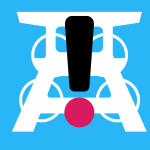 REFSQ-2012-MahauxMH #how #people #requirements #why
REFSQ-2012-MahauxMH #how #people #requirements #why- Choose Your Creativity: Why and How Creativity in Requirements Engineering Means Different Things to Different People (MM, AM, PH), pp. 101–116.
 SAC-2012-GiuntaPT12a #aspect-oriented #design pattern
SAC-2012-GiuntaPT12a #aspect-oriented #design pattern- Superimposing roles for design patterns into application classes by means of aspects (RG, GP, ET), pp. 1866–1868.
 ICSE-2012-Wolff #architecture #industrial #what
ICSE-2012-Wolff #architecture #industrial #what- Software architecture — What does it mean in industry? (Invited industrial talk) (EW), p. 999.
 PLEASE-2012-BoffoliCCV #consistency #flexibility #process #product line
PLEASE-2012-BoffoliCCV #consistency #flexibility #process #product line- Driving flexibility and consistency of business processes by means of product-line engineering and decision tables (NB, DC, DC, GV), pp. 33–36.
 LICS-2012-ChatterjeeV #automaton #game studies
LICS-2012-ChatterjeeV #automaton #game studies- Mean-Payoff Pushdown Games (KC, YV), pp. 195–204.
 CASE-2011-ColP #detection #performance #recursion
CASE-2011-ColP #detection #performance #recursion- Fast and accurate object detection by means of recursive monomial feature elimination and cascade of SVM (LDC, FAP), pp. 304–309.
 ICDAR-2011-HuZ #online #recognition #using
ICDAR-2011-HuZ #online #recognition #using- HMM-Based Recognition of Online Handwritten Mathematical Symbols Using Segmental K-Means Initialization and a Modified Pen-Up/Down Feature (LH, RZ), pp. 457–462.
 ICDAR-2011-WakaharaK #clustering #image #string #using
ICDAR-2011-WakaharaK #clustering #image #string #using- Binarization of Color Character Strings in Scene Images Using K-Means Clustering and Support Vector Machines (TW, KK), pp. 274–278.
 ITiCSE-2011-Hu #what
ITiCSE-2011-Hu #what- Computational thinking: what it might mean and what we might do about it (CH), pp. 223–227.
 WCRE-2011-NonnenSI #research #source code
WCRE-2011-NonnenSI #research #source code- Locating the Meaning of Terms in Source Code Research on “Term Introduction” (JN, DS, PI), pp. 99–108.
 DLT-2011-BattaglinoFFR #encoding #regular expression
DLT-2011-BattaglinoFFR #encoding #regular expression- Encoding Centered Polyominoes by Means of a Regular Language (DB, JMF, AF, SR), pp. 464–465.
 ICALP-v1-2011-BorosEFGMM #analysis #approximate #game studies #probability
ICALP-v1-2011-BorosEFGMM #analysis #approximate #game studies #probability- Stochastic Mean Payoff Games: Smoothed Analysis and Approximation Schemes (EB, KME, MF, VG, KM, BM), pp. 147–158.
 CHI-2011-KapteinDM #adaptation #persuasion
CHI-2011-KapteinDM #adaptation #persuasion- Means based adaptive persuasive systems (MK, SD, PM), pp. 335–344.
 DUXU-v1-2011-PrabhalaLG #people #question #what #word
DUXU-v1-2011-PrabhalaLG #people #question #what #word- Ethnography, Ethnography or Ethnography? What Happens When the Same Word Means Different Things to Different People? (SP, DL, SG), pp. 102–110.
 HCD-2011-Ley #interactive #workflow
HCD-2011-Ley #interactive #workflow- Expert-Sided Workflow Data Acquisition by Means of an Interactive Interview System (DL), pp. 91–100.
 HCI-DDA-2011-EngelMF #human-computer #interactive #user interface
HCI-DDA-2011-EngelMF #human-computer #interactive #user interface- HCI Patterns as a Means to Transform Interactive User Interfaces to Diverse Contexts of Use (JE, CM, PF), pp. 204–213.
 HCI-DDA-2011-ZablotskiyPZM #algorithm #estimation #parametricity #search-based
HCI-DDA-2011-ZablotskiyPZM #algorithm #estimation #parametricity #search-based- GMM Parameter Estimation by Means of EM and Genetic Algorithms (SZ, TP, KZ, WM), pp. 527–536.
 HCI-UA-2011-HopeOHL #design #multi
HCI-UA-2011-HopeOHL #design #multi- Spatial Design, Designers and Users: Exploring the Meaning of Multi-party Service Cognition (TH, MO, YH, MHL), pp. 328–335.
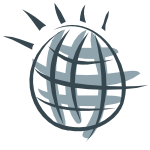 EDOC-2011-SchleicherFGLNSS #strict
EDOC-2011-SchleicherFGLNSS #strict- Compliance Domains: A Means to Model Data-Restrictions in Cloud Environments (DS, CF, SG, FL, AN, PS, DS), pp. 257–266.
 CIKM-2011-Garza #classification #matrix
CIKM-2011-Garza #classification #matrix- Structured data classification by means of matrix factorization (PG), pp. 2165–2168.
 CIKM-2011-WahabzadaKPB #performance #scheduling
CIKM-2011-WahabzadaKPB #performance #scheduling- More influence means less work: fast latent dirichlet allocation by influence scheduling (MW, KK, AP, CB), pp. 2273–2276.
 ECIR-2011-ZucconAR #analysis
ECIR-2011-ZucconAR #analysis- Back to the Roots: Mean-Variance Analysis of Relevance Estimations (GZ, LA, KvR), pp. 716–720.
 ICML-2011-MannorT #markov #optimisation #process
ICML-2011-MannorT #markov #optimisation #process- Mean-Variance Optimization in Markov Decision Processes (SM, JNT), pp. 177–184.
 ICML-2011-YueJ
ICML-2011-YueJ- Beat the Mean Bandit (YY, TJ), pp. 241–248.
 KDD-2011-ChittaJHJ #approximate #clustering #kernel #scalability
KDD-2011-ChittaJHJ #approximate #clustering #kernel #scalability- Approximate kernel k-means: solution to large scale kernel clustering (RC, RJ, TCH, AKJ), pp. 895–903.
 KEOD-2011-AkamaN
KEOD-2011-AkamaN- Meaning-preserving Skolemization (KA, EN), pp. 322–327.
 RE-2011-OhashiKTY #development #traceability #uml
RE-2011-OhashiKTY #development #traceability #uml- A means of establishing traceability based on a UML model in business application development (KO, HK, YT, RY), pp. 279–284.
 SAC-2011-SimoesO #behaviour #game studies #learning #modelling
SAC-2011-SimoesO #behaviour #game studies #learning #modelling- Leveraging the dynamics of learning by modeling and managing psychosocial relations and behavior by means of game theory and memetics (JCS, NO), pp. 1194–1201.
 LICS-2011-BrazdilBCFK #markov #multi #process
LICS-2011-BrazdilBCFK #markov #multi #process- Two Views on Multiple Mean-Payoff Objectives in Markov Decision Processes (TB, VB, KC, VF, AK), pp. 33–42.
 LICS-2011-EhrhardPT #probability
LICS-2011-EhrhardPT #probability- The Computational Meaning of Probabilistic Coherence Spaces (TE, MP, CT), pp. 87–96.
 LICS-2011-Panangaden #semantics
LICS-2011-Panangaden #semantics- The Meaning of Semantics (PP), pp. 4–5.
 ECSA-2010-BerrocalGM #design pattern #requirements
ECSA-2010-BerrocalGM #design pattern #requirements- Facilitating the Selection of Architectural Patterns by Means of a Marked Requirements Model (JB, JGA, JMM), pp. 384–391.
 ICALP-v1-2010-AtseriasM #game studies #proving
ICALP-v1-2010-AtseriasM #game studies #proving- Mean-Payoff Games and Propositional Proofs (AA, ENM), pp. 102–113.
 SEFM-2010-ScannielloRT #architecture #empirical #evaluation #semantics #using
SEFM-2010-ScannielloRT #architecture #empirical #evaluation #semantics #using- Architecture Recovery Using Latent Semantic Indexing and K-Means: An Empirical Evaluation (GS, MR, GT), pp. 103–112.
 CIKM-2010-ChatterjeeBR #clustering
CIKM-2010-ChatterjeeBR #clustering- Feature subspace transformations for enhancing k-means clustering (AC, SB, PR), pp. 1801–1804.
 ICPR-2010-AdluruTWD #re-engineering #using
ICPR-2010-AdluruTWD #re-engineering #using- Improving Undersampled MRI Reconstruction Using Non-local Means (GA, TT, RTW, EVRDB), pp. 4000–4003.
 ICPR-2010-AyechKA #adaptation #clustering #image #segmentation
ICPR-2010-AyechKA #adaptation #clustering #image #segmentation- Image Segmentation Based on Adaptive Fuzzy-C-Means Clustering (MWA, KK, BeA), pp. 2306–2309.
 ICPR-2010-BardajiFS #distance #edit distance #graph
ICPR-2010-BardajiFS #distance #edit distance #graph- Computing the Barycenter Graph by Means of the Graph Edit Distance (IB, MF, AS), pp. 962–965.
 ICPR-2010-ChenWL #clustering #on the
ICPR-2010-ChenWL #clustering #on the- On Dynamic Weighting of Data in Clustering with K-Alpha Means (SC, HW, BL), pp. 774–777.
 ICPR-2010-GouiffesLL
ICPR-2010-GouiffesLL- Color Connectedness Degree for Mean-Shift Tracking (MG, FL, LL), pp. 4561–4564.
 ICPR-2010-HanerG #visual notation
ICPR-2010-HanerG #visual notation- Combining Foreground / Background Feature Points and Anisotropic Mean Shift For Enhanced Visual Object Tracking (SH, IYHG), pp. 3488–3491.
 ICPR-2010-JainO #consistency #graph
ICPR-2010-JainO #consistency #graph- Consistent Estimator of Median and Mean Graph (BJJ, KO), pp. 1032–1035.
 ICPR-2010-KeuperBRPH #3d #robust
ICPR-2010-KeuperBRPH #3d #robust- Mean Shift Gradient Vector Flow: A Robust External Force Field for 3D Active Surfaces (MK, HB, OR, JP, PH), pp. 2784–2787.
 ICPR-2010-KitaW #clustering #image #using
ICPR-2010-KitaW #clustering #image #using- Binarization of Color Characters in Scene Images Using k-means Clustering and Support Vector Machines (KK, TW), pp. 3183–3186.
 ICPR-2010-KobayashiO #clustering
ICPR-2010-KobayashiO #clustering- Von Mises-Fisher Mean Shift for Clustering on a Hypersphere (TK, NO), pp. 2130–2133.
 ICPR-2010-Manzanera #similarity
ICPR-2010-Manzanera #similarity- Local Jet Based Similarity for NL-Means Filtering (AM), pp. 2668–2671.
 ICPR-2010-ReckyL #detection #using
ICPR-2010-ReckyL #detection #using- Windows Detection Using K-means in CIE-Lab Color Space (MR, FL), pp. 356–359.
 ICPR-2010-WanLJ #feature model
ICPR-2010-WanLJ #feature model- Feature Extraction Based on Class Mean Embedding (CME) (MW, ZL, ZJ), pp. 4174–4177.
 ICPR-2010-YoonW #algorithm
ICPR-2010-YoonW #algorithm- Improved Mean Shift Algorithm with Heterogeneous Node Weights (JWY, SPW), pp. 4222–4225.
 KDIR-2010-NcirEB #clustering #kernel
KDIR-2010-NcirEB #clustering #kernel- Kernel Overlapping K-Means for Clustering in Feature Space (CEBN, NE, PB), pp. 250–255.
 CSL-2010-DegorreDGRT #energy #game studies
CSL-2010-DegorreDGRT #energy #game studies- Energy and Mean-Payoff Games with Imperfect Information (AD, LD, RG, JFR, ST), pp. 260–274.
 ICLP-2010-Fierens10 #logic #modelling #performance #probability
ICLP-2010-Fierens10 #logic #modelling #performance #probability- Improving the Efficiency of Gibbs Sampling for Probabilistic Logical Models by Means of Program Specialization (DF), pp. 74–83.
 CASE-2009-GargM #agile #algorithm #clustering #named #using
CASE-2009-GargM #agile #algorithm #clustering #named #using- RACK: RApid clustering using K-means algorithm (VKG, MNM), pp. 621–626.
 CASE-2009-SenguptaDBMD #detection #fault #modelling #using
CASE-2009-SenguptaDBMD #detection #fault #modelling #using- Fault detection of Air Intake Systems of SI gasoline engines using mean value and within cycle models (SS, SD, AKB, SM, AKD), pp. 361–366.
 ICDAR-2009-Likforman-SulemDS #documentation #preprocessor
ICDAR-2009-Likforman-SulemDS #documentation #preprocessor- Pre-Processing of Degraded Printed Documents by Non-local Means and Total Variation (LLS, JD, EHBS), pp. 758–762.
 ITiCSE-2009-Velazquez-IturbideP #algorithm #interactive #learning
ITiCSE-2009-Velazquez-IturbideP #algorithm #interactive #learning- Active learning of greedy algorithms by means of interactive experimentation (JÁVI, APC), pp. 119–123.
 FoSSaCS-2009-AlurDMW #on the
FoSSaCS-2009-AlurDMW #on the- On ω-Languages Defined by Mean-Payoff Conditions (RA, AD, OM, GW), pp. 333–347.
 CHI-2009-VoidaG09a #named
CHI-2009-VoidaG09a #named- WikiFolders: augmenting the display of folders to better convey the meaning of files (SV, SG), pp. 1679–1682.
 OCSC-2009-KindsmullerMS #community #online
OCSC-2009-KindsmullerMS #community #online- Instant Online Communities as a Means to Foster Conferences (MCK, JM, JS), pp. 62–71.
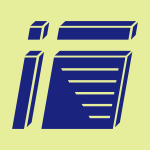 ICEIS-AIDSS-2009-Rojas-MoraG #fuzzy #nondeterminism #set
ICEIS-AIDSS-2009-Rojas-MoraG #fuzzy #nondeterminism #set- The Signing of a Professional Athlete — Reducing Uncertainty with a Weighted Mean Hemimetric for Phi — Fuzzy Subsets (JRM, JGL), pp. 158–163.
 ICEIS-SAIC-2009-LeeLK #classification #using
ICEIS-SAIC-2009-LeeLK #classification #using- Blog Classification using K-means (KJL, ML, WK), pp. 61–67.
 CIKM-2009-ChenL #product line
CIKM-2009-ChenL #product line- Message family propagation for ising mean field based on iteration tree (YC, SL), pp. 345–354.
 CIKM-2009-LeeVRKMI #adaptation #performance #topic #using
CIKM-2009-LeeVRKMI #adaptation #performance #topic #using- Measuring system performance and topic discernment using generalized adaptive-weight mean (CTL, VV, EMR, GK, NMF, AI), pp. 2033–2036.
 ECIR-2009-Wang #analysis #documentation #information retrieval #ranking
ECIR-2009-Wang #analysis #documentation #information retrieval #ranking- Mean-Variance Analysis: A New Document Ranking Theory in Information Retrieval (JW0), pp. 4–16.
 ICML-2009-LiKZ #learning #using
ICML-2009-LiKZ #learning #using- Semi-supervised learning using label mean (YFL, JTK, ZHZ), pp. 633–640.
 ICML-2009-WagstaffB #evaluation
ICML-2009-WagstaffB #evaluation- K-means in space: a radiation sensitivity evaluation (KLW, BJB), pp. 1097–1104.
 KDD-2009-VatturiW #detection #using
KDD-2009-VatturiW #detection #using- Category detection using hierarchical mean shift (PV, WKW), pp. 847–856.
 KDD-2009-WuXC #adaptation #clustering #metric
KDD-2009-WuXC #adaptation #clustering #metric- Adapting the right measures for K-means clustering (JW, HX, JC), pp. 877–886.
 KDIR-2009-Dengel #information management #semantics
KDIR-2009-Dengel #information management #semantics- The Semantic Desktop as a Means for Personal Information Management (AD), p. 5.
 KDIR-2009-HeyerHT #topic
KDIR-2009-HeyerHT #topic- Change of Topics over Time — Tracking Topics by their Change of Meaning (GH, FH, ST), pp. 223–228.
 KDIR-2009-TsakonasD #estimation #modelling #programming #search-based
KDIR-2009-TsakonasD #estimation #modelling #programming #search-based- Deriving Models for Software Project Effort Estimation by Means of Genetic Programming (AT, GD), pp. 34–42.
 KEOD-2009-Dengel #information management #semantics
KEOD-2009-Dengel #information management #semantics- The Semantic Desktop as a Means for Personal Information Management (AD), p. 5.
 KMIS-2009-Dengel #information management #semantics
KMIS-2009-Dengel #information management #semantics- The Semantic Desktop as a Means for Personal Information Management (AD), p. 5.
 SEKE-2009-DoranG #clustering #web
SEKE-2009-DoranG #clustering #web- Classifying Web Robots by K-means Clustering (DD, SSG), pp. 97–102.
 ICMT-2009-HillairetBL #model transformation #query
ICMT-2009-HillairetBL #model transformation #query- Rewriting Queries by Means of Model Transformations from SPARQL to OQL and Vice-Versa (GH, FB, JYL), pp. 116–131.
 POPL-2009-CalcagnoDOY #analysis #composition
POPL-2009-CalcagnoDOY #analysis #composition- Compositional shape analysis by means of bi-abduction (CC, DD, PWO, HY), pp. 289–300.
 REFSQ-2009-Kof #automaton #modelling #specification
REFSQ-2009-Kof #automaton #modelling #specification- Translation of Textual Specifications to Automata by Means of Discourse Context Modeling (LK), pp. 197–211.
 SAC-2009-DiasASP #formal method #web
SAC-2009-DiasASP #formal method #web- Formalizing motivational patterns based on colors and their cultural meanings for developing web applications (ALD, JCAS, LMS, RDP), pp. 152–153.
 TLCA-2009-BasaldellaT #logic #on the
TLCA-2009-BasaldellaT #logic #on the- On the Meaning of Logical Completeness (MB, KT), pp. 50–64.
 DATE-2008-MedardoniLB #design #self
DATE-2008-MedardoniLB #design #self- Variation tolerant NoC design by means of self-calibrating links (SM, ML, DB), pp. 1402–1407.
 DocEng-2008-CodocedoA #documentation #information management #mining #repository
DocEng-2008-CodocedoA #documentation #information management #mining #repository- No mining, no meaning: relating documents across repositories with ontology-driven information extraction (VC, HA), pp. 110–118.
 DLT-J-2007-BertoniR08 #approximate #monad
DLT-J-2007-BertoniR08 #approximate #monad- Approximating the Mean Speedup in Trace Monoids (AB, RR), pp. 497–511.
 CIKM-2008-SuchanekVG #social
CIKM-2008-SuchanekVG #social- Social tags: meaning and suggestions (FMS, MV, DG), pp. 223–232.
 ECIR-2008-FishbeinE #classification #encoding
ECIR-2008-FishbeinE #classification #encoding- Integrating Structure and Meaning: A New Method for Encoding Structure for Text Classification (JMF, CE), pp. 514–521.
 ECIR-2008-KarlgrenHS #word
ECIR-2008-KarlgrenHS #word- Filaments of Meaning in Word Space (JK, AH, MS), pp. 531–538.
 ICPR-2008-AsgharbeygiM #clustering
ICPR-2008-AsgharbeygiM #clustering- Geodesic K-means clustering (NA, AM), pp. 1–4.
 ICPR-2008-BianT
ICPR-2008-BianT- Harmonic mean for subspace selection (WB, DT), pp. 1–4.
 ICPR-2008-Cleuziou #clustering
ICPR-2008-Cleuziou #clustering- An extended version of the k-means method for overlapping clustering (GC), pp. 1–4.
 ICPR-2008-KashimaHRS #clustering #distance #using
ICPR-2008-KashimaHRS #clustering #distance #using- K-means clustering of proportional data using L1 distance (HK, JH, BKR, MS), pp. 1–4.
 ICPR-2008-LiCS #kernel #optimisation #predict #video
ICPR-2008-LiCS #kernel #optimisation #predict #video- An improved mean-shift tracker with kernel prediction and scale optimisation targeting for low-frame-rate video tracking (ZL, JC, NNS), pp. 1–4.
 ICPR-2008-LouJ #distance #image #probability #recognition
ICPR-2008-LouJ #distance #image #probability #recognition- Integrated probability function on local mean distance for image recognition (ZL, ZJ), pp. 1–4.
 ICPR-2008-OikeWW #adaptation #clustering
ICPR-2008-OikeWW #adaptation #clustering- Adaptive selection of non-target cluster centers for K-means tracker (HO, HW, TW), pp. 1–4.
 ICPR-2008-XiaoL #higher-order #using
ICPR-2008-XiaoL #higher-order #using- Improvement on Mean Shift based tracking using second-order information (LX, PL), pp. 1–4.
 ICPR-2008-YiAC #invariant #kernel #using
ICPR-2008-YiAC #invariant #kernel #using- Orientation and scale invariant mean shift using object mask-based kernel (KMY, HSA, JYC), pp. 1–4.
 KDD-2008-HuangDLL #clustering #equivalence #higher-order
KDD-2008-HuangDLL #clustering #equivalence #higher-order- Simultaneous tensor subspace selection and clustering: the equivalence of high order svd and k-means clustering (HH, CHQD, DL, TL), pp. 327–335.
 SEKE-2008-TubiioLR #bibliography #elicitation #perspective
SEKE-2008-TubiioLR #bibliography #elicitation #perspective- Obtaining Well-Founded Practices about Elicitation Techniques by Means of an Update of a Previous Systematic Review (ÓDT, ML, FR), pp. 769–772.
 SAC-2008-CorreaL #documentation #hybrid #semantics
SAC-2008-CorreaL #documentation #hybrid #semantics- Semantic mapping and K-means applied to hybrid SOM-based document organization system construction (RFC, TBL), pp. 1112–1116.
 SAC-2008-MartinsB #on the #realtime
SAC-2008-MartinsB #on the #realtime- On the meaning of modes in uniprocessor real-time systems (PM, AB), pp. 324–325.
 SAC-2008-NhatL #classification #visualisation
SAC-2008-NhatL #classification #visualisation- k-means discriminant maps for data visualization and classification (VDMN, SL), pp. 1187–1191.
 DocEng-2007-NanardNKG #documentation #incremental #multi
DocEng-2007-NanardNKG #documentation #incremental #multi- Genre driven multimedia document production by means of incremental transformation (MN, JN, PRK, LG), pp. 111–120.
 ICDAR-2007-DriraLE #approach #documentation #image #segmentation
ICDAR-2007-DriraLE #approach #documentation #image #segmentation- A Coupled Mean Shift-Anisotropic Diffusion Approach for Document Image Segmentation and Restoration (FD, FL, HE), pp. 814–818.
 SCAM-2007-LawrieFB #identifier
SCAM-2007-LawrieFB #identifier- Extracting Meaning from Abbreviated Identifiers (DL, HF, DB), pp. 213–222.
 WCRE-2007-Marinescu #constraints #enterprise
WCRE-2007-Marinescu #constraints #enterprise- Discovering the Objectual Meaning of Foreign Key Constraints in Enterprise Applications (CM), pp. 100–109.
 PLDI-2007-ScherpelzLC #automation #semantics
PLDI-2007-ScherpelzLC #automation #semantics- Automatic inference of optimizer flow functions from semantic meanings (ERS, SL, CC), pp. 135–145.
 DLT-2007-BertoniR #monad
DLT-2007-BertoniR #monad- Approximability and Non-approximability Results in Computing the Mean Speedup of Trace Monoids (AB, RR), pp. 72–83.
 HCI-IPT-2007-KimC #behaviour #comprehension
HCI-IPT-2007-KimC #behaviour #comprehension- Understanding Camera Phone Imaging: Motivations, Behaviors and Meanings (GK, WC), pp. 374–383.
 HCI-IPT-2007-ZaharakisK #behaviour #interactive #social #ubiquitous
HCI-IPT-2007-ZaharakisK #behaviour #interactive #social #ubiquitous- Social Intelligence as the Means for Achieving Emergent Interactive Behaviour in Ubiquitous Computing Environments (IDZ, ADK), pp. 1018–1029.
 HCI-MIE-2007-KwonPKK #recognition #using
HCI-MIE-2007-KwonPKK #recognition #using- Human Shape Tracking for Gait Recognition Using Active Contours with Mean Shift (KSK, SHP, EYK, HJK), pp. 690–699.
 HIMI-IIE-2007-LiuK
HIMI-IIE-2007-LiuK- Skill Transfer from Expert to Novice — Instruction Manuals Made by Means of Groupware (CYL, YK), pp. 423–429.
 HIMI-IIE-2007-MaungK #data analysis #web
HIMI-IIE-2007-MaungK #data analysis #web- Web Application for Data Analysis by Means of Evidential Dominance (ZAHM, YK), pp. 749–758.
 HIMI-IIE-2007-ZhangWE #collaboration #comprehension
HIMI-IIE-2007-ZhangWE #collaboration #comprehension- Resolving Assumptions in Art-Technology Collaboration as a Means of Extending Shared Understanding (YZ, AW, EAE), pp. 204–211.
 HIMI-MTT-2007-FuchigamiOTO #case study #comparative #interface #process
HIMI-MTT-2007-FuchigamiOTO #case study #comparative #interface #process- A Comparative Study of Brain Activities Engaged in Interface Operations by Means of NIRS Trajectory Map (MF, AO, HT, MO), pp. 830–839.
 HIMI-MTT-2007-OmoriHMCT #process
HIMI-MTT-2007-OmoriHMCT #process- Brain Activities Related to Legibility of Text, Studied by Means of Near Infrared Spectroscopy (MO, SH, MM, MC, HT), pp. 894–902.
 ICEIS-SAIC-2007-KusterTZKCVBCFT #comparative #evaluation
ICEIS-SAIC-2007-KusterTZKCVBCFT #comparative #evaluation- Service Discovery with SWE-ET and DIANE — A Comparative Evaluation by Means of Solutions to a Common Scenario (UK, AT, MZ, BKR, DC, EDV, MB, SC, FMF, CT), pp. 430–437.
 ICML-2007-DingL #adaptation #analysis #clustering #reduction #using
ICML-2007-DingL #adaptation #analysis #clustering #reduction #using- Adaptive dimension reduction using discriminant analysis and K-means clustering (CHQD, TL), pp. 521–528.
 RE-2007-Kof #identification #named
RE-2007-Kof #identification #named- Scenarios: Identifying Missing Objects and Actions by Means of Computational Linguistics (LK), pp. 121–130.
 REFSQ-2007-LaukaitisV #development #information management #natural language
REFSQ-2007-LaukaitisV #development #information management #natural language- Integrating All Stages of Information Systems Development by Means of Natural Language Processing (AL, OV), pp. 218–231.
 DocEng-2006-Maitre #documentation #multi #xml
DocEng-2006-Maitre #documentation #multi #xml- Describing multistructured XML documents by means of delay nodes (JLM), pp. 155–164.
 HT-2006-Zhang #wiki
HT-2006-Zhang #wiki- Wiki means more: hyperreading in Wikipedia (YZ), pp. 23–26.
 ICALP-v2-2006-GimbertZ #game studies
ICALP-v2-2006-GimbertZ #game studies- Deterministic Priority Mean-Payoff Games as Limits of Discounted Games (HG, WZ), pp. 312–323.
 CHI-2006-BhatiaM
CHI-2006-BhatiaM- Listening to your inner voices: investigating means for voice notifications (SB, DSM), pp. 1173–1176.
 ICEIS-SAIC-2006-RibeiroRC
ICEIS-SAIC-2006-RibeiroRC- Adding Meaning to QoS Negotiation (CMFAR, NSR, PRFC), pp. 106–111.
 CIKM-2006-GoldinMN #algorithm #clustering #distance #sequence
CIKM-2006-GoldinMN #algorithm #clustering #distance #sequence- In search of meaning for time series subsequence clustering: matching algorithms based on a new distance measure (DQG, RM, GN), pp. 347–356.
 CIKM-2006-LiuJK #clustering #query
CIKM-2006-LiuJK #clustering #query- Measuring the meaning in time series clustering of text search queries (BL, RJ, KLK), pp. 836–837.
 ECIR-2006-FreschiSB #email #obfuscation #string
ECIR-2006-FreschiSB #email #obfuscation #string- Filtering Obfuscated Email Spam by means of Phonetic String Matching (VF, AS, AB), pp. 505–509.
 ICML-2006-Carreira-Perpinan #clustering #parametricity #performance
ICML-2006-Carreira-Perpinan #clustering #parametricity #performance- Fast nonparametric clustering with Gaussian blurring mean-shift (MÁCP), pp. 153–160.
 ICML-2006-Meila
ICML-2006-Meila- The uniqueness of a good optimum for K-means (MM), pp. 625–632.
 ICPR-v1-2006-BhattacharyaRD #clustering #fuzzy #image #representation #retrieval #semantics #using
ICPR-v1-2006-BhattacharyaRD #clustering #fuzzy #image #representation #retrieval #semantics #using- Image Representation and Retrieval Using Support Vector Machine and Fuzzy C-means Clustering Based Semantical Spaces (PB, MMR, BCD), pp. 929–935.
 ICPR-v1-2006-BouguessaWJ #algorithm #clustering
ICPR-v1-2006-BouguessaWJ #algorithm #clustering- A K-means-based Algorithm for Projective Clustering (MB, SW, QJ), pp. 888–891.
 ICPR-v2-2006-BhattacharyaRD06a #clustering #fuzzy #image #representation #retrieval #semantics #using
ICPR-v2-2006-BhattacharyaRD06a #clustering #fuzzy #image #representation #retrieval #semantics #using- Image Representation and Retrieval Using Support Vector Machine and Fuzzy C-means Clustering Based Semantical Spaces (PB, MMR, BCD), pp. 1162–1168.
 ICPR-v2-2006-ChengCWF #algorithm #prototype #search-based
ICPR-v2-2006-ChengCWF #algorithm #prototype #search-based- A Prototypes-Embedded Genetic K-means Algorithm (SSC, YHC, HMW, HCF), pp. 724–727.
 ICPR-v2-2006-KimYL #estimation #image #interactive #modelling #parametricity #random #segmentation #using
ICPR-v2-2006-KimYL #estimation #image #interactive #modelling #parametricity #random #segmentation #using- New MRF Parameter Estimation Technique for Texture Image Segmentation using Hierarchical GMRF Model Based on Random Spatial Interaction and Mean Field Theory (DHK, IDY, SUL), pp. 365–368.
 ICPR-v2-2006-Maruyama #clustering #configuration management #hardware #image #realtime
ICPR-v2-2006-Maruyama #clustering #configuration management #hardware #image #realtime- Real-time K-Means Clustering for Color Images on Reconfigurable Hardware (TM), pp. 816–819.
 ICPR-v2-2006-YuW06a #algorithm
ICPR-v2-2006-YuW06a #algorithm- Genetic-based K-means algorithm for selection of feature variables (ZY, HSW), pp. 744–747.
 ICPR-v3-2006-Morii #algorithm
ICPR-v3-2006-Morii #algorithm- A Generalized K-Means Algorithm with Semi-Supervised Weight Coefficients (FM), pp. 198–201.
 ICPR-v3-2006-QiuXT #clustering #feedback #kernel #performance #using
ICPR-v3-2006-QiuXT #clustering #feedback #kernel #performance #using- Efficient Relevance Feedback Using Semi-supervised Kernel-specified K-means Clustering (BQ, CX, QT), pp. 316–319.
 ICPR-v4-2006-AbateNRR #invariant #recognition
ICPR-v4-2006-AbateNRR #invariant #recognition- Ear Recognition by means of a Rotation Invariant Descriptor (AFA, MN, DR, SR), pp. 437–440.
 KDD-2006-XiongWC #clustering #metric #perspective #validation
KDD-2006-XiongWC #clustering #metric #perspective #validation- K-means clustering versus validation measures: a data distribution perspective (HX, JW, JC), pp. 779–784.
 HT-2005-KristoficB #adaptation #education #hypermedia #information management
HT-2005-KristoficB #adaptation #education #hypermedia #information management- Improving adaptation in web-based educational hypermedia by means of knowledge discovery (AK, MB), pp. 184–192.
 ICDAR-2005-MarinaiMS #documentation #image #layout #reduction #retrieval
ICDAR-2005-MarinaiMS #documentation #image #layout #reduction #retrieval- Layout based document image retrieval by means of XY tree reduction (SM, EM, GS), pp. 432–436.
 ICDAR-2005-SchlapbachKB #feature model #identification
ICDAR-2005-SchlapbachKB #feature model #identification- ImprovingWriter Identification by Means of Feature Selection and Extraction (AS, VK, HB), pp. 131–135.
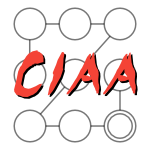 CIAA-J-2004-ChamparnaudCP05
CIAA-J-2004-ChamparnaudCP05- Brute force determinization of nfas by means of state covers (JMC, FC, TP), pp. 441–451.
 CIAA-2005-Hogberg #generative #music #transducer
CIAA-2005-Hogberg #generative #music #transducer- Wind in the Willows — Generating Music by Means of Tree Transducers (JH), pp. 153–162.
 EDOC-2005-VitolinsK #diagrams #modelling #process #semantics #uml #virtual machine
EDOC-2005-VitolinsK #diagrams #modelling #process #semantics #uml #virtual machine- Semantics of UML 2.0 Activity Diagram for Business Modeling by Means of Virtual Machine (VV, AK), pp. 181–194.
 ICEIS-v3-2005-EspositoMORS #data mining #detection #mining #novel #realtime
ICEIS-v3-2005-EspositoMORS #data mining #detection #mining #novel #realtime- Real Time Detection of Novel Attacks by Means of Data Mining Techniques (ME, CM, FO, SPR, CS), pp. 120–127.
 KDD-2005-JagannathanW #clustering #distributed #privacy
KDD-2005-JagannathanW #clustering #distributed #privacy- Privacy-preserving distributed k-means clustering over arbitrarily partitioned data (GJ, RNW), pp. 593–599.
 MLDM-2005-BunkeDIK #analysis #graph #learning #predict
MLDM-2005-BunkeDIK #analysis #graph #learning #predict- Analysis of Time Series of Graphs: Prediction of Node Presence by Means of Decision Tree Learning (HB, PJD, CI, MK), pp. 366–375.
 SAC-2005-BaglioniFT #information management
SAC-2005-BaglioniFT #information management- DrC4.5: Improving C4.5 by means of prior knowledge (MB, BF, FT), pp. 474–481.
 SAC-2005-JablonskiLMMH #integration
SAC-2005-JablonskiLMMH #integration- Data logistics as a means of integration in healthcare applications (SJ, RL, CM, SM, WH), pp. 236–241.
 SAC-2005-XiaPLCS
SAC-2005-XiaPLCS- Indexing continuously changing data with mean-variance tree (YX, SP, SL, RC, RS), pp. 1125–1132.
 LICS-2005-ChatterjeeHJ #game studies
LICS-2005-ChatterjeeHJ #game studies- Mean-Payoff Parity Games (KC, TAH, MJ), pp. 178–187.
 ASE-2004-SilvaF #evaluation #framework #object-oriented
ASE-2004-SilvaF #evaluation #framework #object-oriented- Helping Object-Oriented Framework Use and Evaluation by means of Historical Use Information (RPeS, ECF), pp. 278–281.
 HT-2004-Bernstein #adaptation #metadata
HT-2004-Bernstein #adaptation #metadata- Lust, touch, metadata: meaning and the limits of adaptation (MB), pp. 36–37.
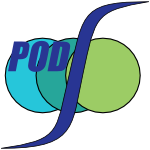 PODS-2004-AgarwalM #clustering
PODS-2004-AgarwalM #clustering- k-Means Projective Clustering (PKA, NHM), pp. 155–165.
 ITiCSE-2004-Ben-AriBBH #education #question #research #what
ITiCSE-2004-Ben-AriBBH #education #question #research #what- What do we mean by theoretically sound research in computer science education? (MBA, AB, SB, CH), pp. 230–231.
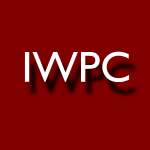 IWPC-2004-CanforaCV #design #empirical
IWPC-2004-CanforaCV #design #empirical- Working in Pairs as a Means for Design Knowledge Building: An Empirical Study (GC, AC, CAV), pp. 62–69.
 IWPC-2004-MennieC #metaprogramming
IWPC-2004-MennieC #metaprogramming- Giving Meaning to Macros (CAM, CLAC), pp. 79–88.
 SCAM-2004-CeccatoT #aspect-oriented #programming
SCAM-2004-CeccatoT #aspect-oriented #programming- Adding Distribution to Existing Applications by Means of Aspect Oriented Programming (MC, PT), pp. 107–116.
 STOC-2004-Har-PeledM #clustering #on the
STOC-2004-Har-PeledM #clustering #on the- On coresets for k-means and k-median clustering (SHP, SM), pp. 291–300.
 CIAA-2004-ChamparnaudCP
CIAA-2004-ChamparnaudCP- Brute Force Determinization of NFAs by Means of State Covers (JMC, FC, TP), pp. 80–89.
 ICEIS-v2-2004-CaleroDSSMS #approximate #database #dependence #experience #fuzzy
ICEIS-v2-2004-CaleroDSSMS #approximate #database #dependence #experience #fuzzy- An Experience in Management of Imprecise Soil Databases by Means of Fuzzy Association Rules and Fuzzy Approximate Dependencies (JC, GD, MSM, DS, MAVM, JMS), pp. 138–146.
 ICEIS-v2-2004-CastilhoPL #clustering #information management #process
ICEIS-v2-2004-CastilhoPL #clustering #information management #process- Informed K-Means: A Clustering Process biased by Prior Knowledge (WFC, HAdP, ML), pp. 469–475.
 ICEIS-v2-2004-DykC #education #mining #process #statistics
ICEIS-v2-2004-DykC #education #mining #process #statistics- Warehousing and Mining of Higher Education Data by Means of Statistical Process Control (LVD, PC), pp. 110–115.
 ICML-2004-DingH04a #analysis #clustering #component
ICML-2004-DingH04a #analysis #clustering #component- K-means clustering via principal component analysis (CHQD, XH).
 ICPR-v1-2004-AbrantesM #algorithm #framework
ICPR-v1-2004-AbrantesM #algorithm #framework- The Mean Shift Algorithm and the Unified Framework (AJA, JSM), pp. 244–247.
 ICPR-v1-2004-TabboneW04b #adaptation #algorithm #image
ICPR-v1-2004-TabboneW04b #adaptation #algorithm #image- Binarization of Color Images from an Adaptation of Possibilistic C-Means Algorithm (ST, LW), pp. 704–707.
 ICPR-v2-2004-TanakaT #image #probability
ICPR-v2-2004-TanakaT #image #probability- Probabilistic Image Processing based on the Q-Ising Model by Means of the Mean-Field Method and Loopy Belief Propagation (KT, DMT), pp. 40–43.
 ICPR-v3-2004-DeguchiKO #algorithm
ICPR-v3-2004-DeguchiKO #algorithm- Object Tracking by the Mean-Shift of Regional Color Distribution Combined with the Particle-Filter Algorithm (KD, OK, TO), pp. 506–509.
 ICPR-v4-2004-TothSWA #clustering #detection #using
ICPR-v4-2004-TothSWA #clustering #detection #using- Detection of Moving Shadows using Mean Shift Clustering and a Significance Test (DT, IS, AW, TA), pp. 260–263.
 ICPR-v4-2004-XuF #clustering #difference
ICPR-v4-2004-XuF #clustering #difference- Delta-MSE Dissimilarity in Suboptimal K-Means Clustering (MX, PF), pp. 577–580.
 KDD-2004-DhillonGK #clustering #kernel #normalisation
KDD-2004-DhillonGK #clustering #kernel #normalisation- Kernel k-means: spectral clustering and normalized cuts (ISD, YG, BK), pp. 551–556.
 KDD-2004-Ordonez #algorithm #clustering #programming #sql
KDD-2004-Ordonez #algorithm #clustering #programming #sql- Programming the K-means clustering algorithm in SQL (CO), pp. 823–828.
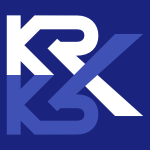 KR-2004-Woods #semantics
KR-2004-Woods #semantics- Meaning and Links: A Semantic Odyssey (WAW), pp. 740–742.
 SAC-2004-LuLFDB #algorithm #clustering #named #performance #search-based
SAC-2004-LuLFDB #algorithm #clustering #named #performance #search-based- FGKA: a Fast Genetic K-means Clustering Algorithm (YL, SL, FF, YD, SJB), pp. 622–623.
 SAC-2004-StefanoSPT #communication #framework
SAC-2004-StefanoSPT #communication #framework- Enforcing agent communication laws by means of a reflective framework (ADS, CS, GP, ET), pp. 462–468.
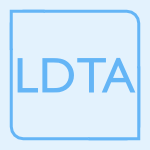 LDTA-2004-GradaraSVV #model checking #modelling #parallel #source code #thread
LDTA-2004-GradaraSVV #model checking #modelling #parallel #source code #thread- Model Checking Multithreaded Programs by Means of Reduced Models (SG, AS, MLV, GV), pp. 55–74.
 DATE-2003-CabodiNQ #approximate #bound #model checking #satisfiability #traversal
DATE-2003-CabodiNQ #approximate #bound #model checking #satisfiability #traversal- Improving SAT-Based Bounded Model Checking by Means of BDD-Based Approximate Traversals (GC, SN, SQ), pp. 10898–10905.
 ICDAR-2003-BrittoSSSB #algorithm #clustering #low cost #parallel #using
ICDAR-2003-BrittoSSSB #algorithm #clustering #low cost #parallel #using- A Low-Cost Parallel K-Means VQ Algorithm Using Cluster Computing (AdSBJ, PSLdS, RS, SdRSdS, DLB), pp. 839–843.
 ICDAR-2003-StefanoCM #algorithm #classification #reliability #search-based
ICDAR-2003-StefanoCM #algorithm #classification #reliability #search-based- Exploiting Reliability for Dynamic Selection of Classifiers by Means of Genetic Algorithms (CDS, ADC, AM), pp. 671–675.
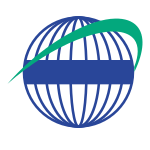 CSEET-2003-ZuserG #performance
CSEET-2003-ZuserG #performance- Reflecting Skills and Personality Internally as Means for Team Performance Improvement (WZ, TG), pp. 234–241.
 STOC-2003-KabanetsI #bound #polynomial #proving #testing
STOC-2003-KabanetsI #bound #polynomial #proving #testing- Derandomizing polynomial identity tests means proving circuit lower bounds (VK, RI), pp. 355–364.
 DLT-2003-ChamparnaudC #algorithm #automaton #nondeterminism #reduction
DLT-2003-ChamparnaudC #algorithm #automaton #nondeterminism #reduction- NFA Reduction Algorithms by Means of Regular Inequalities (JMC, FC), pp. 194–205.
 ICEIS-v2-2003-SalemSA #algorithm #self #using
ICEIS-v2-2003-SalemSA #algorithm #self #using- Improving Self-Organizing Feature Map (SOFM) Training Algorithm Using K-Means Initialization (ABMS, MMS, AFA), pp. 399–405.
 ICML-2003-Elkan #difference #using
ICML-2003-Elkan #difference #using- Using the Triangle Inequality to Accelerate k-Means (CE), pp. 147–153.
 KDD-2003-VaidyaC #clustering #privacy
KDD-2003-VaidyaC #clustering #privacy- Privacy-preserving k-means clustering over vertically partitioned data (JV, CC), pp. 206–215.
 SAC-2003-BorgerRC #concurrent #modelling #state machine #uml
SAC-2003-BorgerRC #concurrent #modelling #state machine #uml- Modeling the Meaning of Transitions from and to Concurrent States in UML State Machines (EB, ER, AC), pp. 1086–1091.
 ICSE-2003-HedinBM #programming #re-engineering
ICSE-2003-HedinBM #programming #re-engineering- Introducing Software Engineering by means of Extreme Programming (GH, LB, BM), pp. 586–593.
 RTA-2003-WellsPK #diagrams
RTA-2003-WellsPK #diagrams- Diagrams for Meaning Preservation (JBW, DP, FK), pp. 88–106.
 SAT-2003-Bruni #fault #satisfiability #scalability #set
SAT-2003-Bruni #fault #satisfiability #scalability #set- Solving Error Correction for Large Data Sets by Means of a SAT Solver (RB), pp. 229–241.
 DATE-2002-PalkovicMC #optimisation #trade-off
DATE-2002-PalkovicMC #optimisation #trade-off- Systematic Power-Performance Trade-Off in MPEG-4 by Means of Selective Function Inlining Steered by Address Optimization Opportunities (MP, MM, FC), pp. 1072–1077.
 VLDB-2002-Bosworth #data transformation #database #web
VLDB-2002-Bosworth #data transformation #database #web- Data Routing Rather than Databases: The Meaning of the Next Wave of the Web Revolution to Data Management (AB).
 ICSM-2002-MullerTH #programming
ICSM-2002-MullerTH #programming- Two Controlled Experiments Concerning the Usefulness of Assertions as a Means for Programming (MMM, RT, OH), pp. 84–92.
 CHI-2002-PirhonenBH #gesture #mobile
CHI-2002-PirhonenBH #gesture #mobile- Gestural and audio metaphors as a means of control for mobile devices (AP, SAB, CH), pp. 291–298.
 ICEIS-2002-GharibMT #algorithm #clustering #using
ICEIS-2002-GharibMT #algorithm #clustering #using- High Dimensional Data Clustering Using SOFM And K-Means Algorithms (TFG, MGM, MFT), pp. 488–493.
 CIKM-2002-HamerlyE #algorithm #clustering
CIKM-2002-HamerlyE #algorithm #clustering- Alternatives to the k-means algorithm that find better clusterings (GH, CE), pp. 600–607.
 ICPR-v2-2002-BazenG #modelling
ICPR-v2-2002-BazenG #modelling- Elastic Minutiae Matching by Means of Thin-Plate Spline Models (AMB, SHG), pp. 985–988.
 ICPR-v2-2002-Lu #robust #using
ICPR-v2-2002-Lu #robust #using- Block DCT-Based Robust Watermarking Using Side Information Extracted by Mean Filtering (CSL), pp. 1001–1004.
 ICPR-v3-2002-BoomgaardW #analysis #equivalence #estimation #on the #robust
ICPR-v3-2002-BoomgaardW #analysis #equivalence #estimation #on the #robust- On the Equivalence of Local-Mode Finding, Robust Estimation and Mean-Shift Analysis as Used in Early Vision Tasks (RvdB, JvdW), pp. 927–930.
 ICPR-v3-2002-OngRV #gesture
ICPR-v3-2002-OngRV #gesture- Deciphering Layered Meaning in Gestures (SCWO, SR, YVV), p. 815–?.
 ICPR-v4-2002-JiangBAK #string
ICPR-v4-2002-JiangBAK #string- Curve Morphing by Weighted Mean of Strings (XJ, HB, KA, AK), p. 192–?.
 ICPR-v4-2002-ZhangR #clustering #kernel #scalability
ICPR-v4-2002-ZhangR #clustering #kernel #scalability- A Large Scale Clustering Scheme for Kernel K-Means (RZ, AIR), pp. 289–292.
 ICPR-v4-2002-ZhuJFL #eye tracking #information retrieval #realtime
ICPR-v4-2002-ZhuJFL #eye tracking #information retrieval #realtime- Combining Kalman Filtering and Mean Shift for Real Time Eye Tracking under Active IR Illumination (ZZ, QJ, KF, KL), p. 318–?.
 ICSE-2002-BlausteinOB #graph #sequence chart
ICSE-2002-BlausteinOB #graph #sequence chart- Observing timed systems by means of message sequence chart graphs (SB, FO, VAB), p. 707.
 ICSE-2002-JandlRSG #corba #enterprise #integration
ICSE-2002-JandlRSG #corba #enterprise #integration- Enterprise application integration by means of a generic CORBA LDAP gateway (MJ, WR, AS, KMG), p. 711.
 DATE-2001-CabodiCQ #process
DATE-2001-CabodiCQ #process- Biasing symbolic search by means of dynamic activity profiles (GC, PC, SQ), pp. 9–15.
 ITiCSE-2001-WilsonPS #distance #online #student
ITiCSE-2001-WilsonPS #distance #online #student- On-line dynamic interviews (ODIN): a means of overcoming distance in student-teacher relations (LW, JAP, RLS), p. 178.
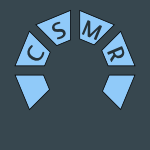 CSMR-2001-EisenbarthKS #component #concept analysis
CSMR-2001-EisenbarthKS #component #concept analysis- Derivation of Feature Component Maps by Means of Concept Analysis (TE, RK, DS), pp. 176–179.
 CIAA-2001-DubernardG #automaton #finite #generative #scheduling
CIAA-2001-DubernardG #automaton #finite #generative #scheduling- Scheduling Hard Sporadic Tasks by Means of Finite Automata and Generating Functions (JPD, DG), pp. 87–100.
 SVIS-2001-KorhonenST #algorithm #comprehension #testing #visualisation
SVIS-2001-KorhonenST #algorithm #comprehension #testing #visualisation- Understanding Algorithms by Means of Visualized Path Testing (AK, ES, JT), pp. 256–268.
 ICML-2001-WagstaffCRS #clustering
ICML-2001-WagstaffCRS #clustering- Constrained K-means Clustering with Background Knowledge (KW, CC, SR, SS), pp. 577–584.
 SEKE-2001-JorgensenIS #estimation #towards
SEKE-2001-JorgensenIS #estimation #towards- Software effort estimation by analogy and regression toward the mean (MJ, UI, DIKS), pp. 268–274.
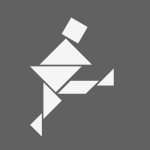 GCSE-2001-AttardiC #metaprogramming
GCSE-2001-AttardiC #metaprogramming- Reflection Support by Means of Template Metaprogramming (GA, AC), pp. 118–127.
 CC-2001-MartenaP #alias #analysis #model checking
CC-2001-MartenaP #alias #analysis #model checking- Alias Analysis by Means of a Model Checker (VM, PSP), pp. 3–19.
 IWPC-2000-Sneed #animation #comprehension
IWPC-2000-Sneed #animation #comprehension- Source Animation as a Means of Program Comprehension (HMS), pp. 179–187.
 ICEIS-2000-Sato-Ilic #classification #fuzzy #relational
ICEIS-2000-Sato-Ilic #classification #fuzzy #relational- Classification Based on Relational Fuzzy C-Means for 3-Way Data (MSI), pp. 217–221.
 ICEIS-2000-Theaker #case study #industrial
ICEIS-2000-Theaker #case study #industrial- Case Study: “Industry Strength” — It’s True Meaning for High-Tech SMEs (CJT), p. XLVI.
 ICML-2000-PellegM #clustering #estimation #named #performance
ICML-2000-PellegM #clustering #estimation #named #performance- X-means: Extending K-means with Efficient Estimation of the Number of Clusters (DP, AWM), pp. 727–734.
 ICPR-v1-2000-NoordamBB #clustering #fuzzy #geometry #image #multi #segmentation
ICPR-v1-2000-NoordamBB #clustering #fuzzy #geometry #image #multi #segmentation- Geometrically Guided Fuzzy C-Means Clustering for Multivariate Image Segmentation (JCN, WHAMVdB, LMCB), pp. 1462–1465.
 ICPR-v2-2000-BaesensVVD #feature model #network #optimisation
ICPR-v2-2000-BaesensVVD #feature model #network #optimisation- Wrapped Feature Selection by Means of Guided Neural Network Optimization (BB, SV, JV, GD), pp. 2113–2116.
 ICPR-v2-2000-SelbBL #fuzzy
ICPR-v2-2000-SelbBL #fuzzy- Fuzzy C-Means in an MDL-Framework (AS, HB, AL), pp. 2740–2743.
 ICPR-v2-2000-UgenaAA #independence #network #recognition #speech
ICPR-v2-2000-UgenaAA #independence #network #recognition #speech- Speaker-Independent Speech Recognition by Means of Functional-Link Neural Networks (AU, FdA, MEA), pp. 6018–6021.
 ICPR-v3-2000-AdamsSWG #named
ICPR-v3-2000-AdamsSWG #named- MFDTs: Mean Field Dynamic Trees (NJA, AJS, CKIW, ZG), pp. 3151–3154.
 SIGIR-2000-AmentoTH #documentation #predict #quality #web
SIGIR-2000-AmentoTH #documentation #predict #quality #web- Does “authority” mean quality? predicting expert quality ratings of Web documents (BA, LGT, WCH), pp. 296–303.
 ICRE-2000-AntonA #certification #requirements #what
ICRE-2000-AntonA #certification #requirements #what- What Do You Mean I’ve Been Practicing without a License? Certification and Licensing of Requirements Engineering Professionals (AIA, JMA), p. 151.
 ICRE-2000-Mead00a #certification #requirements #what
ICRE-2000-Mead00a #certification #requirements #what- What Do You Mean I’m Practicing without a License? Certification and Licensing of Requirements Engineering Professionals (NRM), p. 152.
 SAC-2000-WuL #clustering #fuzzy #named #network
SAC-2000-WuL #clustering #fuzzy #named #network- F3MCNN: A Fuzzy Minimum Mean Maximum Clustering Neural Network (LGW, HL), pp. 10–14.
 DAC-1999-CabodiCQ #process #traversal
DAC-1999-CabodiCQ #process #traversal- Improving Symbolic Traversals by Means of Activity Profiles (GC, PC, SQ), pp. 306–311.
 DAC-1999-DasdanIG #algorithm #performance #problem
DAC-1999-DasdanIG #algorithm #performance #problem- Efficient Algorithms for Optimum Cycle Mean and Optimum Cost to Time Ratio Problems (AD, SI, RKG), pp. 37–42.
 ICDAR-1999-StefanoCM #algorithm #recognition
ICDAR-1999-StefanoCM #algorithm #recognition- Handwritten Numeral Recognition by means of Evolutionary Algorithms (CDS, ADC, AM), pp. 804–807.
 IWPC-1999-HarmanFHBD #approximate #decidability
IWPC-1999-HarmanFHBD #approximate #decidability- Program Simplification as a Means of Approximating Undecidable Propositions (MH, CF, RMH, DB, SD), pp. 208–217.
 WIA-1999-PaunT #finite #multi #transducer
WIA-1999-PaunT #finite #multi #transducer- Multiset Processing by Means of Systems of Finite State Transducers (GP, GT), pp. 140–157.
 IFM-1999-Mery #automaton #requirements
IFM-1999-Mery #automaton #requirements- Requirements for a Temporal B — Assigning Temporal Meaning to Abstract Machines... and to Abstract Systems (DM), pp. 395–414.
 HCI-EI-1999-Imaz #design #interactive
HCI-EI-1999-Imaz #design #interactive- Designing Interactions through Meaning (MI), pp. 1252–1256.
 HCI-EI-1999-MachateS #gesture #interactive
HCI-EI-1999-MachateS #gesture #interactive- Let Your Hands Talk — Gestures as a Means of Interaction (JM, SS), pp. 291–295.
 HCI-EI-1999-Matsuda #algorithm #ambiguity #search-based
HCI-EI-1999-Matsuda #algorithm #ambiguity #search-based- Genetic Algorithm (GA) as a Means of Ambiguous Decision Support by AHP (NM), pp. 764–768.
 EDOC-1999-Persson #ontology
EDOC-1999-Persson #ontology- Shibboleth of many meanings. An essay on the ontology of business objects (EP), pp. 2–17.
 ACIR-1999-ThornleyL #information retrieval
ACIR-1999-ThornleyL #information retrieval- IR and the Dialectic of Meaning (CT, RL).
 KDD-1999-PellegM #algorithm #geometry #reasoning
KDD-1999-PellegM #algorithm #geometry #reasoning- Accelerating Exact k-means Algorithms with Geometric Reasoning (DP, AWM), pp. 277–281.
 MLDM-1999-Jahn #image #learning #preprocessor
MLDM-1999-Jahn #image #learning #preprocessor- Unsupervised Learning of Local Mean Gray Values for Image Pre-processing (HJ), pp. 64–74.
 TOOLS-USA-1999-DeugoOAW #communication #component
TOOLS-USA-1999-DeugoOAW #communication #component- Communication as a Means to Differentiate Objects, Components and Agents (DD, FO, BA, MW), pp. 376–386.
 CSMR-1998-CalzolariTA #maintenance #modelling
CSMR-1998-CalzolariTA #maintenance #modelling- Modeling Maintenance Effort by Means of Dynamic Systems (FC, PT, GA), pp. 150–156.
 ICML-1998-BradleyF #clustering
ICML-1998-BradleyF #clustering- Refining Initial Points for K-Means Clustering (PSB, UMF), pp. 91–99.
 ICPR-1998-WakaharaO #clustering
ICPR-1998-WakaharaO #clustering- Extended mean shift in handwriting clustering (TW, KO), pp. 384–388.
 KR-1998-Mani #formal method #problem
KR-1998-Mani #formal method #problem- A Theory of Granularity and its Application to Problems of Polysemy and Underspecification of Meaning (IM), pp. 245–257.
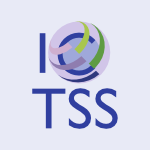 IWTCS-1998-Grunsky #automaton #testing
IWTCS-1998-Grunsky #automaton #testing- Testing of Automata: From Experiments to Representations by Means of Fragments (ISG), pp. 3–14.
 EDTC-1997-BoglioloBM #adaptation #behaviour #modelling
EDTC-1997-BoglioloBM #adaptation #behaviour #modelling- Adaptive least mean square behavioral power modeling (AB, LB, GDM), pp. 404–410.
 CSEET-1997-Mayr #education #enterprise #re-engineering
CSEET-1997-Mayr #education #enterprise #re-engineering- Teaching Software Engineering by Means of a “Virtual Enterprise” (HM), pp. 176–184.
 HCI-SEC-1997-BlanchonF #what
HCI-SEC-1997-BlanchonF #what- Asking Users About What They Mean: Two Experiments & Results (HB, LF), pp. 609–612.
 HCI-SEC-1997-ShiozawaM #interactive #visualisation
HCI-SEC-1997-ShiozawaM #interactive #visualisation- WWW Visualization Giving Meanings to Interactive Manipulations (HS, YM), pp. 791–794.
 TOOLS-PACIFIC-1997-Hoffman #analysis #object-oriented
TOOLS-PACIFIC-1997-Hoffman #analysis #object-oriented- A Practical Notation for Object Oriented Analysis with a Formal Meaning (JH), pp. 225–237.
 KBSE-1996-Jr.B #algebra #algorithm #synthesis
KBSE-1996-Jr.B #algebra #algorithm #synthesis- Synthesis of Local Search Algorithms by Algebraic Means (RPGJ, PDB), p. 7.
 TACAS-1996-DamonJ #performance #specification
TACAS-1996-DamonJ #performance #specification- Efficient Search as a Means of Executing Specifications (CD, DJ), pp. 70–86.
 ICALP-1996-Glabbeek #specification
ICALP-1996-Glabbeek #specification- The Meaning of Negative Premises in Transition System Specifications II (RJvG), pp. 502–513.
 ICALP-1996-Raymond #data flow #network #regular expression
ICALP-1996-Raymond #data flow #network #regular expression- Recognizing Regular Expressions by Means of Dataflow Networks (PR), pp. 336–347.
 ICML-1996-Saerens #fault #learning
ICML-1996-Saerens #fault #learning- Non Mean Square Error Criteria for the Training of Learning Machines (MS), pp. 427–434.
 ICPR-1996-AkhmetshinL #difference #fourier #image #principle #re-engineering
ICPR-1996-AkhmetshinL #difference #fourier #image #principle #re-engineering- The reconstruction of signals and images from the noisy Fourier transform phase by means of the generalized difference principle (AMA, IL), pp. 370–375.
 ICPR-1996-FinchWH #relational
ICPR-1996-FinchWH #relational- Relational matching with mean field annealing (AMF, RCW, ERH), pp. 359–363.
 ICPR-1996-Zhao0C #image #segmentation
ICPR-1996-Zhao0C #image #segmentation- Simplified Gaussian and mean curvatures to range image segmentation (CZ, DZ, YC), pp. 427–431.
 DAC-1995-KruiskampL #algorithm #named #search-based #synthesis
DAC-1995-KruiskampL #algorithm #named #search-based #synthesis- DARWIN: CMOS Opamp Synthesis by Means of a Genetic Algorithm (WK, DL), pp. 433–438.
 ICDAR-v2-1995-BraunCGM #image #preprocessor
ICDAR-v2-1995-BraunCGM #image #preprocessor- Preprocessing raw binary images by means of contours (AB, TC, JMG, EM), pp. 640–643.
 ICDAR-v2-1995-Zarri #approach #documentation #information management #knowledge-based #representation
ICDAR-v2-1995-Zarri #approach #documentation #information management #knowledge-based #representation- The “Narrative Knowledge Representation Language”, a knowledge-based approach for representing the “meaning” of textual documents (GPZ), pp. 545–548.
 RTA-1995-Burghardt #set
RTA-1995-Burghardt #set- Regular Substitution Sets: A Means of Controlling E-Unification (JB), pp. 382–396.
 ESOP-1994-Amtoft #fixpoint #re-engineering
ESOP-1994-Amtoft #fixpoint #re-engineering- Local Type Reconstruction by Means of Symbolic Fixed Point Iteration (TA), pp. 43–57.
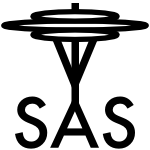 SAS-1994-HalbwachsPR #approximate #hybrid #linear #verification
SAS-1994-HalbwachsPR #approximate #hybrid #linear #verification- Verification of Linear Hybrid Systems by Means of Convex Approximations (NH, YEP, PR), pp. 223–237.
 CSCW-1994-KatzenbergM #summary
CSCW-1994-KatzenbergM #summary- Meaning-Making in the Creation of Useful Summary Reports (BK, JPM), pp. 199–206.
 ICML-1994-GiordanaSZ #algorithm #concept #learning #search-based
ICML-1994-GiordanaSZ #algorithm #concept #learning #search-based- Learning Disjunctive Concepts by Means of Genetic Algorithms (AG, LS, FZ), pp. 96–104.
 KR-1994-Rao #formal method #recognition #towards
KR-1994-Rao #formal method #recognition #towards- Means-End Plan Recognition — Towards a Theory of Reactive Recognition (ASR), pp. 497–508.
 ECOOP-1994-Pree #design #object-oriented #reuse
ECOOP-1994-Pree #design #object-oriented #reuse- Meta Patterns — A Means For Capturing the Essentials of Reusable Object-Oriented Design (WP), pp. 150–162.
 ICLP-1994-JacquetM #named
ICLP-1994-JacquetM #named- PP-clauses: A Means for Handling Resources (JMJ, LM), p. 743.
 WSA-1993-MaffeisG #architecture #dependence
WSA-1993-MaffeisG #architecture #dependence- Combining Dependability with Architectural Adatability by Means of the SIGNAL Language (OM, PLG), pp. 99–110.
 ICML-1993-DattaK #concept #learning #multi
ICML-1993-DattaK #concept #learning #multi- Concept Sharing: A Means to Improve Multi-Concept Learning (PD, DFK), pp. 89–96.
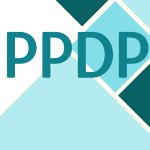 PLILP-1993-CorsiniMRC #abstract interpretation #bottom-up #constraints #finite #performance #prolog #theorem proving
PLILP-1993-CorsiniMRC #abstract interpretation #bottom-up #constraints #finite #performance #prolog #theorem proving- Efficient Bottom-up Abstract Interpretation of Prolog by Means of Constraint Solving over Symbolic Finite Domains (MMC, KM, AR, BLC), pp. 75–91.
 FSE-1993-Bergadano #generative #learning #testing
FSE-1993-Bergadano #generative #learning #testing- Test Case Generation by Means of Learning Techniques (FB), pp. 149–162.
 FSE-1993-Griswold #data flow
FSE-1993-Griswold #data flow- Direct Update of Data Flow Representations for a Meaning-Preserving Program Restructuring Tool (WGG), pp. 42–55.
 ICLP-1993-CorsiniR #analysis #fault #safety
ICLP-1993-CorsiniR #analysis #fault #safety- Safety Analysis by Means of Fault Trees: An Application for Open Boolean Solvers (MMC, AR), p. 834.
 CSCW-1992-KuuttiA #concept #identification #process
CSCW-1992-KuuttiA #concept #identification #process- Identifying Potential CSCW Applications by Means of Activity Theory Concepts: A Case Example (KK, TA), pp. 233–240.
 ICALP-1991-BolG #specification
ICALP-1991-BolG #specification- The Meaning of Negative Premises in Transition System Specifications (RNB, JFG), pp. 481–494.
 PLILP-1991-Ait-KaciP #towards
PLILP-1991-Ait-KaciP #towards- Towards a Meaning of LIFE (HAK, AP), pp. 255–274.
 ICLP-1991-Lever #proving
ICLP-1991-Lever #proving- Proving Program Properties by Means of SLS-Resolution (JML), pp. 614–628.
 ML-1989-YangF #clustering #concept
ML-1989-YangF #clustering #concept- Conceptual Clustering of Mean-Ends Plans (HY, DHF), pp. 232–234.
 SIGMOD-1987-StempleMS #design #feedback #on the #transaction
SIGMOD-1987-StempleMS #design #feedback #on the #transaction- On the Modes and Meaning of Feedback to Transaction Designers (DWS, SM, TS), pp. 374–386.
 HCI-CE-1987-Tominaga #specification
HCI-CE-1987-Tominaga #specification- A Computer Method for Specifying Colors by Means of Color Naming (ST), pp. 131–138.
 POPL-1985-Lamport #concurrent #specification #what #why
POPL-1985-Lamport #concurrent #specification #what #why- What It Means for a Concurrent Program to Satisfy a Specification: Why No One Has Specified Priority (LL), pp. 78–83.
 ICSE-1985-PottsBCM #design #simulation #specification #validation
ICSE-1985-PottsBCM #design #simulation #specification #validation- Discrete Event Simulation as a Means of Validating JSD Design Specifications (CP, AB, BHC, RM), pp. 119–127.
 PODS-1984-TaySG #database #performance
PODS-1984-TaySG #database #performance- A Mean Value Performance Model for Locking in Databases: The Waiting Case (YCT, RS, NG), pp. 311–322.
 ICALP-1984-Bidoit #algebra #equation #exception #fault #specification
ICALP-1984-Bidoit #algebra #equation #exception #fault #specification- Algebraic Specification of Exception Handling and Error Recovery by Means of Declarations and Equations (MB), pp. 95–108.
 ICSE-1984-MiliD #verification
ICSE-1984-MiliD #verification- A System for Classifying Program Verification Methods: Assigning Meanings to Program Verification Methods (AM, JD), pp. 499–509.
 POPL-1982-Komorowski #data type #implementation #partial evaluation #prolog
POPL-1982-Komorowski #data type #implementation #partial evaluation #prolog- Partial Evaluation as a Means for Inferencing Data Structures in an Applicative Language: A Theory and Implementation in the Case of Prolog (HJK), pp. 255–267.
 ICALP-1980-BergstraT #data type #equation #finite #specification
ICALP-1980-BergstraT #data type #equation #finite #specification- A Characterisation of Computable Data Types by Means of a Finite Equational Specification Method (JAB, JVT), pp. 76–90.
 SDCG-1980-Madsen #attribute grammar #on the #semantics
SDCG-1980-Madsen #attribute grammar #on the #semantics- On defining semantics by means of extended attribute grammars (OLM), pp. 259–299.
 SIGMOD-1979-Codd #database #relational
SIGMOD-1979-Codd #database #relational- Extending the Data Base Relational Model to Capture More Meaning (Abstract) (EFC), p. 161.
 DAC-1978-Kleine #automation #design #documentation #process
DAC-1978-Kleine #automation #design #documentation #process- Automating the software design process by means of software design and documentation language (HK), pp. 371–379.
 ICALP-1977-Dieterich #context-free grammar #fault #parsing
ICALP-1977-Dieterich #context-free grammar #fault #parsing- Parsing and Syntactic Error Recovery for Context-Free Grammars by Means of Coarse Structures (EWD), pp. 180–192.
 SOSP-1973-BrunoCS #independence #scheduling
SOSP-1973-BrunoCS #independence #scheduling- Scheduling Independent Tasks to Reduce Mean Finishing Time (Extended Abstract) (JLB, EGCJ, RS), pp. 102–103.
 CASE-2015-BlanchiniFGP #programming
CASE-2015-BlanchiniFGP #programming CASE-2015-ChangL #algorithm #fuzzy #image
CASE-2015-ChangL #algorithm #fuzzy #image CASE-2015-LinHK #algorithm #fuzzy #image #segmentation
CASE-2015-LinHK #algorithm #fuzzy #image #segmentation FoSSaCS-2015-Velner #decidability #game studies #multi #robust
FoSSaCS-2015-Velner #decidability #game studies #multi #robust TACAS-2015-BrazdilCFK #multi #named #synthesis
TACAS-2015-BrazdilCFK #multi #named #synthesis STOC-2015-CohenEMMP #approximate #clustering #rank #reduction
STOC-2015-CohenEMMP #approximate #clustering #rank #reduction CSCW-2015-KimL #comprehension #mobile
CSCW-2015-KimL #comprehension #mobile DUXU-UI-2015-WiedauGFGW #communication #named
DUXU-UI-2015-WiedauGFGW #communication #named HIMI-IKC-2015-UeokaI #development
HIMI-IKC-2015-UeokaI #development ICML-2015-BachemLK #estimation #parametricity
ICML-2015-BachemLK #estimation #parametricity ICML-2015-DingZSMM #consistency
ICML-2015-DingZSMM #consistency ICML-2015-HugginsNSM #markov #named #process
ICML-2015-HugginsNSM #markov #named #process ICML-2015-TristanTS #estimation #gpu #performance
ICML-2015-TristanTS #estimation #gpu #performance MoDELS-J-2011-Steimann15 #refactoring
MoDELS-J-2011-Steimann15 #refactoring MoDELS-J-2011-Steimann15 #refactoring
MoDELS-J-2011-Steimann15 #refactoring MoDELS-2015-VallejoKMB #case study #reuse #symmetry
MoDELS-2015-VallejoKMB #case study #reuse #symmetry SAC-2015-HendersonGE #clustering #empirical #named #parametricity #performance #probability
SAC-2015-HendersonGE #clustering #empirical #named #parametricity #performance #probability SPLC-2015-FontBHC #automation #formal method #product line #variability
SPLC-2015-FontBHC #automation #formal method #product line #variability CAV-2015-BrenguierR #game studies #multi
CAV-2015-BrenguierR #game studies #multi CSL-2015-BrotherstonV #logic
CSL-2015-BrotherstonV #logic LICS-2015-ChatterjeeKK #markov #multi #process
LICS-2015-ChatterjeeKK #markov #multi #process LICS-2015-ClementeR #multi #problem #worst-case
LICS-2015-ClementeR #multi #problem #worst-case SIGMOD-2014-KargarACGSY #database #keyword #named #relational
SIGMOD-2014-KargarACGSY #database #keyword #named #relational FoSSaCS-2014-Chatterjee0GO #game studies #probability
FoSSaCS-2014-Chatterjee0GO #game studies #probability ICALP-v1-2014-AllamigeonBG #algorithm #game studies #polynomial
ICALP-v1-2014-AllamigeonBG #algorithm #game studies #polynomial ICALP-v2-2014-ChatterjeeI #complexity #game studies
ICALP-v2-2014-ChatterjeeI #complexity #game studies CHI-2014-HarveyGS #human-computer
CHI-2014-HarveyGS #human-computer CSCW-2014-PreistMC #volunteer
CSCW-2014-PreistMC #volunteer DUXU-DI-2014-PaulinBA #case study #experience #user interface
DUXU-DI-2014-PaulinBA #case study #experience #user interface DUXU-ELAS-2014-JoshiW #collaboration #empirical
DUXU-ELAS-2014-JoshiW #collaboration #empirical DUXU-TMT-2014-CoventryBJM #behaviour #named #security
DUXU-TMT-2014-CoventryBJM #behaviour #named #security HCI-AIMT-2014-SunLF #comprehension #memory management
HCI-AIMT-2014-SunLF #comprehension #memory management HIMI-DE-2014-WinterhollerBCM #adaptation
HIMI-DE-2014-WinterhollerBCM #adaptation LCT-TRE-2014-IshikawaAKSTD #learning #process #self #student
LCT-TRE-2014-IshikawaAKSTD #learning #process #self #student HILT-2014-Seidewitz #execution #modelling #uml
HILT-2014-Seidewitz #execution #modelling #uml ICML-c1-2014-IyerNS #bound #convergence #estimation #kernel
ICML-c1-2014-IyerNS #bound #convergence #estimation #kernel ICML-c1-2014-MuandetFSGS #estimation #kernel
ICML-c1-2014-MuandetFSGS #estimation #kernel ICML-c2-2014-HsuS
ICML-c2-2014-HsuS ICML-c2-2014-NieYH #analysis #component #robust
ICML-c2-2014-NieYH #analysis #component #robust ICML-c2-2014-VinnikovS #component #independence
ICML-c2-2014-VinnikovS #component #independence ICPR-2014-ChenSPS #detection #energy #statistics
ICPR-2014-ChenSPS #detection #energy #statistics ICPR-2014-Dahllof #classification
ICPR-2014-Dahllof #classification ICPR-2014-KarM #fuzzy #using
ICPR-2014-KarM #fuzzy #using ICPR-2014-MehnertMSMB #approach
ICPR-2014-MehnertMSMB #approach ICPR-2014-NayefGO #documentation #image
ICPR-2014-NayefGO #documentation #image ICPR-2014-PedersenNM #adaptation #algorithm #estimation
ICPR-2014-PedersenNM #adaptation #algorithm #estimation ICPR-2014-SlitiHBA #analysis #robust #using
ICPR-2014-SlitiHBA #analysis #robust #using ICPR-2014-SongLZC #adaptation #performance #using
ICPR-2014-SongLZC #adaptation #performance #using ICPR-2014-Yasuda #effectiveness
ICPR-2014-Yasuda #effectiveness KDIR-2014-SatoNS #classification #kernel #using
KDIR-2014-SatoNS #classification #kernel #using Onward-2014-SamimiDOWM #call-by
Onward-2014-SamimiDOWM #call-by PPoPP-2014-Rubin #compilation #question #research #what
PPoPP-2014-Rubin #compilation #question #research #what LICS-CSL-2014-Velner #multi #robust #synthesis
LICS-CSL-2014-Velner #multi #robust #synthesis ICDAR-2013-LebourgeoisDGD #documentation #image #performance #segmentation
ICDAR-2013-LebourgeoisDGD #documentation #image #performance #segmentation ICDAR-2013-ZhuZ #detection #image #recognition #using
ICDAR-2013-ZhuZ #detection #image #recognition #using TACAS-2013-BohyBFR #ltl #specification #synthesis
TACAS-2013-BohyBFR #ltl #specification #synthesis ICSM-2013-Karus #automation #development #identification
ICSM-2013-Karus #automation #development #identification DLT-J-2012-HromkovicKKS13 #automaton #logic #nondeterminism #representation
DLT-J-2012-HromkovicKKS13 #automaton #logic #nondeterminism #representation ICALP-v1-2013-BorosEGM #algorithm #game studies #probability #pseudo #random
ICALP-v1-2013-BorosEGM #algorithm #game studies #probability #pseudo #random IFM-2013-DemasiCMA #fault tolerance #simulation
IFM-2013-DemasiCMA #fault tolerance #simulation ICFP-2013-Balabonski
ICFP-2013-Balabonski CHI-2013-BirnholtzHR #student #twitter
CHI-2013-BirnholtzHR #student #twitter CHI-2013-ThiryLBR #authoring #framework #timeline
CHI-2013-ThiryLBR #authoring #framework #timeline CSCW-2013-HuangDLLG #bound
CSCW-2013-HuangDLLG #bound HIMI-LCCB-2013-BrynielssonJL #communication #design #process #prototype #social #social media #using #video
HIMI-LCCB-2013-BrynielssonJL #communication #design #process #prototype #social #social media #using #video OCSC-2013-FardounAC #community #education #network #online #social #student
OCSC-2013-FardounAC #community #education #network #online #social #student ICML-c3-2013-Cuturid
ICML-c3-2013-Cuturid KDIR-KMIS-2013-NcirE #clustering #on the #question
KDIR-KMIS-2013-NcirE #clustering #on the #question KEOD-2013-OimK #comprehension #representation
KEOD-2013-OimK #comprehension #representation MLDM-2013-DoganBK #algorithm #integration #self
MLDM-2013-DoganBK #algorithm #integration #self ER-BR-2013-Finkelstein #re-engineering #what
ER-BR-2013-Finkelstein #re-engineering #what SAC-2013-SenatoreP #collaboration #concept analysis #fuzzy #navigation
SAC-2013-SenatoreP #collaboration #concept analysis #fuzzy #navigation ESEC-FSE-2013-SilicDS #clustering #predict #reliability #web #web service
ESEC-FSE-2013-SilicDS #clustering #predict #reliability #web #web service CSL-2013-Tendera
CSL-2013-Tendera ASE-2012-Nogueira #complexity #predict #testing
ASE-2012-Nogueira #complexity #predict #testing VLDB-2012-BahmaniMVKV #scalability
VLDB-2012-BahmaniMVKV #scalability WCRE-2012-CleveH #question #what
WCRE-2012-CleveH #question #what DLT-2012-HromkovicKKS #automaton #logic #nondeterminism #representation
DLT-2012-HromkovicKKS #automaton #logic #nondeterminism #representation ICALP-v1-2012-LeviRR #testing
ICALP-v1-2012-LeviRR #testing ICALP-v2-2012-Velner #automaton #complexity
ICALP-v2-2012-Velner #automaton #complexity ICML-2012-GrunewalderLGBPP
ICML-2012-GrunewalderLGBPP ICML-2012-KulisJ #algorithm
ICML-2012-KulisJ #algorithm ICML-2012-YuS #analysis #kernel
ICML-2012-YuS #analysis #kernel ICPR-2012-AyechZ #clustering #feature model #image #modelling #segmentation #statistics
ICPR-2012-AyechZ #clustering #feature model #image #modelling #segmentation #statistics ICPR-2012-ChaudhuriM #on the
ICPR-2012-ChaudhuriM #on the ICPR-2012-ChenS #multi
ICPR-2012-ChenS #multi ICPR-2012-Havens #approximate #kernel #streaming
ICPR-2012-Havens #approximate #kernel #streaming ICPR-2012-HuangHHLJW #representation
ICPR-2012-HuangHHLJW #representation ICPR-2012-LiVBB #clustering #learning #using
ICPR-2012-LiVBB #clustering #learning #using ICPR-2012-NielsenLYV #matrix
ICPR-2012-NielsenLYV #matrix ICPR-2012-SerratosaCS #graph #interactive
ICPR-2012-SerratosaCS #graph #interactive KDD-2012-LiuA #clustering #data flow #web
KDD-2012-LiuA #clustering #data flow #web KMIS-2012-VanharantaK #ontology
KMIS-2012-VanharantaK #ontology MLDM-2012-ForczmanskiF #classification #distance #representation
MLDM-2012-ForczmanskiF #classification #distance #representation MLDM-2012-Moreira-MatiasMGB #categorisation #classification #matrix #using
MLDM-2012-Moreira-MatiasMGB #categorisation #classification #matrix #using MLDM-2012-VlaseMI #clustering #metadata #using
MLDM-2012-VlaseMI #clustering #metadata #using RE-2012-MaglyasNS #question #what
RE-2012-MaglyasNS #question #what REFSQ-2012-MahauxMH #how #people #requirements #why
REFSQ-2012-MahauxMH #how #people #requirements #why SAC-2012-GiuntaPT12a #aspect-oriented #design pattern
SAC-2012-GiuntaPT12a #aspect-oriented #design pattern ICSE-2012-Wolff #architecture #industrial #what
ICSE-2012-Wolff #architecture #industrial #what PLEASE-2012-BoffoliCCV #consistency #flexibility #process #product line
PLEASE-2012-BoffoliCCV #consistency #flexibility #process #product line LICS-2012-ChatterjeeV #automaton #game studies
LICS-2012-ChatterjeeV #automaton #game studies CASE-2011-ColP #detection #performance #recursion
CASE-2011-ColP #detection #performance #recursion ICDAR-2011-HuZ #online #recognition #using
ICDAR-2011-HuZ #online #recognition #using ICDAR-2011-WakaharaK #clustering #image #string #using
ICDAR-2011-WakaharaK #clustering #image #string #using ITiCSE-2011-Hu #what
ITiCSE-2011-Hu #what WCRE-2011-NonnenSI #research #source code
WCRE-2011-NonnenSI #research #source code DLT-2011-BattaglinoFFR #encoding #regular expression
DLT-2011-BattaglinoFFR #encoding #regular expression ICALP-v1-2011-BorosEFGMM #analysis #approximate #game studies #probability
ICALP-v1-2011-BorosEFGMM #analysis #approximate #game studies #probability CHI-2011-KapteinDM #adaptation #persuasion
CHI-2011-KapteinDM #adaptation #persuasion DUXU-v1-2011-PrabhalaLG #people #question #what #word
DUXU-v1-2011-PrabhalaLG #people #question #what #word HCD-2011-Ley #interactive #workflow
HCD-2011-Ley #interactive #workflow HCI-DDA-2011-EngelMF #human-computer #interactive #user interface
HCI-DDA-2011-EngelMF #human-computer #interactive #user interface HCI-DDA-2011-ZablotskiyPZM #algorithm #estimation #parametricity #search-based
HCI-DDA-2011-ZablotskiyPZM #algorithm #estimation #parametricity #search-based HCI-UA-2011-HopeOHL #design #multi
HCI-UA-2011-HopeOHL #design #multi EDOC-2011-SchleicherFGLNSS #strict
EDOC-2011-SchleicherFGLNSS #strict CIKM-2011-Garza #classification #matrix
CIKM-2011-Garza #classification #matrix CIKM-2011-WahabzadaKPB #performance #scheduling
CIKM-2011-WahabzadaKPB #performance #scheduling ECIR-2011-ZucconAR #analysis
ECIR-2011-ZucconAR #analysis ICML-2011-MannorT #markov #optimisation #process
ICML-2011-MannorT #markov #optimisation #process ICML-2011-YueJ
ICML-2011-YueJ KDD-2011-ChittaJHJ #approximate #clustering #kernel #scalability
KDD-2011-ChittaJHJ #approximate #clustering #kernel #scalability KEOD-2011-AkamaN
KEOD-2011-AkamaN RE-2011-OhashiKTY #development #traceability #uml
RE-2011-OhashiKTY #development #traceability #uml SAC-2011-SimoesO #behaviour #game studies #learning #modelling
SAC-2011-SimoesO #behaviour #game studies #learning #modelling LICS-2011-BrazdilBCFK #markov #multi #process
LICS-2011-BrazdilBCFK #markov #multi #process LICS-2011-EhrhardPT #probability
LICS-2011-EhrhardPT #probability LICS-2011-Panangaden #semantics
LICS-2011-Panangaden #semantics ECSA-2010-BerrocalGM #design pattern #requirements
ECSA-2010-BerrocalGM #design pattern #requirements ICALP-v1-2010-AtseriasM #game studies #proving
ICALP-v1-2010-AtseriasM #game studies #proving SEFM-2010-ScannielloRT #architecture #empirical #evaluation #semantics #using
SEFM-2010-ScannielloRT #architecture #empirical #evaluation #semantics #using CIKM-2010-ChatterjeeBR #clustering
CIKM-2010-ChatterjeeBR #clustering ICPR-2010-AdluruTWD #re-engineering #using
ICPR-2010-AdluruTWD #re-engineering #using ICPR-2010-AyechKA #adaptation #clustering #image #segmentation
ICPR-2010-AyechKA #adaptation #clustering #image #segmentation ICPR-2010-BardajiFS #distance #edit distance #graph
ICPR-2010-BardajiFS #distance #edit distance #graph ICPR-2010-ChenWL #clustering #on the
ICPR-2010-ChenWL #clustering #on the ICPR-2010-GouiffesLL
ICPR-2010-GouiffesLL ICPR-2010-HanerG #visual notation
ICPR-2010-HanerG #visual notation ICPR-2010-JainO #consistency #graph
ICPR-2010-JainO #consistency #graph ICPR-2010-KeuperBRPH #3d #robust
ICPR-2010-KeuperBRPH #3d #robust ICPR-2010-KitaW #clustering #image #using
ICPR-2010-KitaW #clustering #image #using ICPR-2010-KobayashiO #clustering
ICPR-2010-KobayashiO #clustering ICPR-2010-Manzanera #similarity
ICPR-2010-Manzanera #similarity ICPR-2010-ReckyL #detection #using
ICPR-2010-ReckyL #detection #using ICPR-2010-WanLJ #feature model
ICPR-2010-WanLJ #feature model ICPR-2010-YoonW #algorithm
ICPR-2010-YoonW #algorithm KDIR-2010-NcirEB #clustering #kernel
KDIR-2010-NcirEB #clustering #kernel CSL-2010-DegorreDGRT #energy #game studies
CSL-2010-DegorreDGRT #energy #game studies ICLP-2010-Fierens10 #logic #modelling #performance #probability
ICLP-2010-Fierens10 #logic #modelling #performance #probability CASE-2009-GargM #agile #algorithm #clustering #named #using
CASE-2009-GargM #agile #algorithm #clustering #named #using CASE-2009-SenguptaDBMD #detection #fault #modelling #using
CASE-2009-SenguptaDBMD #detection #fault #modelling #using ICDAR-2009-Likforman-SulemDS #documentation #preprocessor
ICDAR-2009-Likforman-SulemDS #documentation #preprocessor ITiCSE-2009-Velazquez-IturbideP #algorithm #interactive #learning
ITiCSE-2009-Velazquez-IturbideP #algorithm #interactive #learning FoSSaCS-2009-AlurDMW #on the
FoSSaCS-2009-AlurDMW #on the CHI-2009-VoidaG09a #named
CHI-2009-VoidaG09a #named OCSC-2009-KindsmullerMS #community #online
OCSC-2009-KindsmullerMS #community #online ICEIS-AIDSS-2009-Rojas-MoraG #fuzzy #nondeterminism #set
ICEIS-AIDSS-2009-Rojas-MoraG #fuzzy #nondeterminism #set ICEIS-SAIC-2009-LeeLK #classification #using
ICEIS-SAIC-2009-LeeLK #classification #using CIKM-2009-ChenL #product line
CIKM-2009-ChenL #product line CIKM-2009-LeeVRKMI #adaptation #performance #topic #using
CIKM-2009-LeeVRKMI #adaptation #performance #topic #using ECIR-2009-Wang #analysis #documentation #information retrieval #ranking
ECIR-2009-Wang #analysis #documentation #information retrieval #ranking ICML-2009-LiKZ #learning #using
ICML-2009-LiKZ #learning #using ICML-2009-WagstaffB #evaluation
ICML-2009-WagstaffB #evaluation KDD-2009-VatturiW #detection #using
KDD-2009-VatturiW #detection #using KDD-2009-WuXC #adaptation #clustering #metric
KDD-2009-WuXC #adaptation #clustering #metric KDIR-2009-Dengel #information management #semantics
KDIR-2009-Dengel #information management #semantics KDIR-2009-HeyerHT #topic
KDIR-2009-HeyerHT #topic KDIR-2009-TsakonasD #estimation #modelling #programming #search-based
KDIR-2009-TsakonasD #estimation #modelling #programming #search-based KEOD-2009-Dengel #information management #semantics
KEOD-2009-Dengel #information management #semantics KMIS-2009-Dengel #information management #semantics
KMIS-2009-Dengel #information management #semantics SEKE-2009-DoranG #clustering #web
SEKE-2009-DoranG #clustering #web ICMT-2009-HillairetBL #model transformation #query
ICMT-2009-HillairetBL #model transformation #query POPL-2009-CalcagnoDOY #analysis #composition
POPL-2009-CalcagnoDOY #analysis #composition REFSQ-2009-Kof #automaton #modelling #specification
REFSQ-2009-Kof #automaton #modelling #specification SAC-2009-DiasASP #formal method #web
SAC-2009-DiasASP #formal method #web TLCA-2009-BasaldellaT #logic #on the
TLCA-2009-BasaldellaT #logic #on the DATE-2008-MedardoniLB #design #self
DATE-2008-MedardoniLB #design #self DocEng-2008-CodocedoA #documentation #information management #mining #repository
DocEng-2008-CodocedoA #documentation #information management #mining #repository DLT-J-2007-BertoniR08 #approximate #monad
DLT-J-2007-BertoniR08 #approximate #monad CIKM-2008-SuchanekVG #social
CIKM-2008-SuchanekVG #social ECIR-2008-FishbeinE #classification #encoding
ECIR-2008-FishbeinE #classification #encoding ECIR-2008-KarlgrenHS #word
ECIR-2008-KarlgrenHS #word ICPR-2008-AsgharbeygiM #clustering
ICPR-2008-AsgharbeygiM #clustering ICPR-2008-BianT
ICPR-2008-BianT ICPR-2008-Cleuziou #clustering
ICPR-2008-Cleuziou #clustering ICPR-2008-KashimaHRS #clustering #distance #using
ICPR-2008-KashimaHRS #clustering #distance #using ICPR-2008-LiCS #kernel #optimisation #predict #video
ICPR-2008-LiCS #kernel #optimisation #predict #video ICPR-2008-LouJ #distance #image #probability #recognition
ICPR-2008-LouJ #distance #image #probability #recognition ICPR-2008-OikeWW #adaptation #clustering
ICPR-2008-OikeWW #adaptation #clustering ICPR-2008-XiaoL #higher-order #using
ICPR-2008-XiaoL #higher-order #using ICPR-2008-YiAC #invariant #kernel #using
ICPR-2008-YiAC #invariant #kernel #using KDD-2008-HuangDLL #clustering #equivalence #higher-order
KDD-2008-HuangDLL #clustering #equivalence #higher-order SEKE-2008-TubiioLR #bibliography #elicitation #perspective
SEKE-2008-TubiioLR #bibliography #elicitation #perspective SAC-2008-CorreaL #documentation #hybrid #semantics
SAC-2008-CorreaL #documentation #hybrid #semantics SAC-2008-MartinsB #on the #realtime
SAC-2008-MartinsB #on the #realtime SAC-2008-NhatL #classification #visualisation
SAC-2008-NhatL #classification #visualisation DocEng-2007-NanardNKG #documentation #incremental #multi
DocEng-2007-NanardNKG #documentation #incremental #multi ICDAR-2007-DriraLE #approach #documentation #image #segmentation
ICDAR-2007-DriraLE #approach #documentation #image #segmentation SCAM-2007-LawrieFB #identifier
SCAM-2007-LawrieFB #identifier WCRE-2007-Marinescu #constraints #enterprise
WCRE-2007-Marinescu #constraints #enterprise PLDI-2007-ScherpelzLC #automation #semantics
PLDI-2007-ScherpelzLC #automation #semantics DLT-2007-BertoniR #monad
DLT-2007-BertoniR #monad HCI-IPT-2007-KimC #behaviour #comprehension
HCI-IPT-2007-KimC #behaviour #comprehension HCI-IPT-2007-ZaharakisK #behaviour #interactive #social #ubiquitous
HCI-IPT-2007-ZaharakisK #behaviour #interactive #social #ubiquitous HCI-MIE-2007-KwonPKK #recognition #using
HCI-MIE-2007-KwonPKK #recognition #using HIMI-IIE-2007-LiuK
HIMI-IIE-2007-LiuK HIMI-IIE-2007-MaungK #data analysis #web
HIMI-IIE-2007-MaungK #data analysis #web HIMI-IIE-2007-ZhangWE #collaboration #comprehension
HIMI-IIE-2007-ZhangWE #collaboration #comprehension HIMI-MTT-2007-FuchigamiOTO #case study #comparative #interface #process
HIMI-MTT-2007-FuchigamiOTO #case study #comparative #interface #process HIMI-MTT-2007-OmoriHMCT #process
HIMI-MTT-2007-OmoriHMCT #process ICEIS-SAIC-2007-KusterTZKCVBCFT #comparative #evaluation
ICEIS-SAIC-2007-KusterTZKCVBCFT #comparative #evaluation ICML-2007-DingL #adaptation #analysis #clustering #reduction #using
ICML-2007-DingL #adaptation #analysis #clustering #reduction #using RE-2007-Kof #identification #named
RE-2007-Kof #identification #named REFSQ-2007-LaukaitisV #development #information management #natural language
REFSQ-2007-LaukaitisV #development #information management #natural language DocEng-2006-Maitre #documentation #multi #xml
DocEng-2006-Maitre #documentation #multi #xml HT-2006-Zhang #wiki
HT-2006-Zhang #wiki ICALP-v2-2006-GimbertZ #game studies
ICALP-v2-2006-GimbertZ #game studies CHI-2006-BhatiaM
CHI-2006-BhatiaM ICEIS-SAIC-2006-RibeiroRC
ICEIS-SAIC-2006-RibeiroRC CIKM-2006-GoldinMN #algorithm #clustering #distance #sequence
CIKM-2006-GoldinMN #algorithm #clustering #distance #sequence CIKM-2006-LiuJK #clustering #query
CIKM-2006-LiuJK #clustering #query ECIR-2006-FreschiSB #email #obfuscation #string
ECIR-2006-FreschiSB #email #obfuscation #string ICML-2006-Carreira-Perpinan #clustering #parametricity #performance
ICML-2006-Carreira-Perpinan #clustering #parametricity #performance ICML-2006-Meila
ICML-2006-Meila ICPR-v1-2006-BhattacharyaRD #clustering #fuzzy #image #representation #retrieval #semantics #using
ICPR-v1-2006-BhattacharyaRD #clustering #fuzzy #image #representation #retrieval #semantics #using ICPR-v1-2006-BouguessaWJ #algorithm #clustering
ICPR-v1-2006-BouguessaWJ #algorithm #clustering ICPR-v2-2006-BhattacharyaRD06a #clustering #fuzzy #image #representation #retrieval #semantics #using
ICPR-v2-2006-BhattacharyaRD06a #clustering #fuzzy #image #representation #retrieval #semantics #using ICPR-v2-2006-ChengCWF #algorithm #prototype #search-based
ICPR-v2-2006-ChengCWF #algorithm #prototype #search-based ICPR-v2-2006-KimYL #estimation #image #interactive #modelling #parametricity #random #segmentation #using
ICPR-v2-2006-KimYL #estimation #image #interactive #modelling #parametricity #random #segmentation #using ICPR-v2-2006-Maruyama #clustering #configuration management #hardware #image #realtime
ICPR-v2-2006-Maruyama #clustering #configuration management #hardware #image #realtime ICPR-v2-2006-YuW06a #algorithm
ICPR-v2-2006-YuW06a #algorithm ICPR-v3-2006-Morii #algorithm
ICPR-v3-2006-Morii #algorithm ICPR-v3-2006-QiuXT #clustering #feedback #kernel #performance #using
ICPR-v3-2006-QiuXT #clustering #feedback #kernel #performance #using ICPR-v4-2006-AbateNRR #invariant #recognition
ICPR-v4-2006-AbateNRR #invariant #recognition KDD-2006-XiongWC #clustering #metric #perspective #validation
KDD-2006-XiongWC #clustering #metric #perspective #validation HT-2005-KristoficB #adaptation #education #hypermedia #information management
HT-2005-KristoficB #adaptation #education #hypermedia #information management ICDAR-2005-MarinaiMS #documentation #image #layout #reduction #retrieval
ICDAR-2005-MarinaiMS #documentation #image #layout #reduction #retrieval ICDAR-2005-SchlapbachKB #feature model #identification
ICDAR-2005-SchlapbachKB #feature model #identification CIAA-J-2004-ChamparnaudCP05
CIAA-J-2004-ChamparnaudCP05 CIAA-2005-Hogberg #generative #music #transducer
CIAA-2005-Hogberg #generative #music #transducer EDOC-2005-VitolinsK #diagrams #modelling #process #semantics #uml #virtual machine
EDOC-2005-VitolinsK #diagrams #modelling #process #semantics #uml #virtual machine ICEIS-v3-2005-EspositoMORS #data mining #detection #mining #novel #realtime
ICEIS-v3-2005-EspositoMORS #data mining #detection #mining #novel #realtime KDD-2005-JagannathanW #clustering #distributed #privacy
KDD-2005-JagannathanW #clustering #distributed #privacy MLDM-2005-BunkeDIK #analysis #graph #learning #predict
MLDM-2005-BunkeDIK #analysis #graph #learning #predict SAC-2005-BaglioniFT #information management
SAC-2005-BaglioniFT #information management SAC-2005-JablonskiLMMH #integration
SAC-2005-JablonskiLMMH #integration SAC-2005-XiaPLCS
SAC-2005-XiaPLCS LICS-2005-ChatterjeeHJ #game studies
LICS-2005-ChatterjeeHJ #game studies ASE-2004-SilvaF #evaluation #framework #object-oriented
ASE-2004-SilvaF #evaluation #framework #object-oriented HT-2004-Bernstein #adaptation #metadata
HT-2004-Bernstein #adaptation #metadata PODS-2004-AgarwalM #clustering
PODS-2004-AgarwalM #clustering ITiCSE-2004-Ben-AriBBH #education #question #research #what
ITiCSE-2004-Ben-AriBBH #education #question #research #what IWPC-2004-CanforaCV #design #empirical
IWPC-2004-CanforaCV #design #empirical IWPC-2004-MennieC #metaprogramming
IWPC-2004-MennieC #metaprogramming SCAM-2004-CeccatoT #aspect-oriented #programming
SCAM-2004-CeccatoT #aspect-oriented #programming STOC-2004-Har-PeledM #clustering #on the
STOC-2004-Har-PeledM #clustering #on the CIAA-2004-ChamparnaudCP
CIAA-2004-ChamparnaudCP ICEIS-v2-2004-CaleroDSSMS #approximate #database #dependence #experience #fuzzy
ICEIS-v2-2004-CaleroDSSMS #approximate #database #dependence #experience #fuzzy ICEIS-v2-2004-CastilhoPL #clustering #information management #process
ICEIS-v2-2004-CastilhoPL #clustering #information management #process ICEIS-v2-2004-DykC #education #mining #process #statistics
ICEIS-v2-2004-DykC #education #mining #process #statistics ICML-2004-DingH04a #analysis #clustering #component
ICML-2004-DingH04a #analysis #clustering #component ICPR-v1-2004-AbrantesM #algorithm #framework
ICPR-v1-2004-AbrantesM #algorithm #framework ICPR-v1-2004-TabboneW04b #adaptation #algorithm #image
ICPR-v1-2004-TabboneW04b #adaptation #algorithm #image ICPR-v2-2004-TanakaT #image #probability
ICPR-v2-2004-TanakaT #image #probability ICPR-v3-2004-DeguchiKO #algorithm
ICPR-v3-2004-DeguchiKO #algorithm ICPR-v4-2004-TothSWA #clustering #detection #using
ICPR-v4-2004-TothSWA #clustering #detection #using ICPR-v4-2004-XuF #clustering #difference
ICPR-v4-2004-XuF #clustering #difference KDD-2004-DhillonGK #clustering #kernel #normalisation
KDD-2004-DhillonGK #clustering #kernel #normalisation KDD-2004-Ordonez #algorithm #clustering #programming #sql
KDD-2004-Ordonez #algorithm #clustering #programming #sql KR-2004-Woods #semantics
KR-2004-Woods #semantics SAC-2004-LuLFDB #algorithm #clustering #named #performance #search-based
SAC-2004-LuLFDB #algorithm #clustering #named #performance #search-based SAC-2004-StefanoSPT #communication #framework
SAC-2004-StefanoSPT #communication #framework LDTA-2004-GradaraSVV #model checking #modelling #parallel #source code #thread
LDTA-2004-GradaraSVV #model checking #modelling #parallel #source code #thread DATE-2003-CabodiNQ #approximate #bound #model checking #satisfiability #traversal
DATE-2003-CabodiNQ #approximate #bound #model checking #satisfiability #traversal ICDAR-2003-BrittoSSSB #algorithm #clustering #low cost #parallel #using
ICDAR-2003-BrittoSSSB #algorithm #clustering #low cost #parallel #using ICDAR-2003-StefanoCM #algorithm #classification #reliability #search-based
ICDAR-2003-StefanoCM #algorithm #classification #reliability #search-based CSEET-2003-ZuserG #performance
CSEET-2003-ZuserG #performance STOC-2003-KabanetsI #bound #polynomial #proving #testing
STOC-2003-KabanetsI #bound #polynomial #proving #testing DLT-2003-ChamparnaudC #algorithm #automaton #nondeterminism #reduction
DLT-2003-ChamparnaudC #algorithm #automaton #nondeterminism #reduction ICEIS-v2-2003-SalemSA #algorithm #self #using
ICEIS-v2-2003-SalemSA #algorithm #self #using ICML-2003-Elkan #difference #using
ICML-2003-Elkan #difference #using KDD-2003-VaidyaC #clustering #privacy
KDD-2003-VaidyaC #clustering #privacy SAC-2003-BorgerRC #concurrent #modelling #state machine #uml
SAC-2003-BorgerRC #concurrent #modelling #state machine #uml ICSE-2003-HedinBM #programming #re-engineering
ICSE-2003-HedinBM #programming #re-engineering RTA-2003-WellsPK #diagrams
RTA-2003-WellsPK #diagrams SAT-2003-Bruni #fault #satisfiability #scalability #set
SAT-2003-Bruni #fault #satisfiability #scalability #set DATE-2002-PalkovicMC #optimisation #trade-off
DATE-2002-PalkovicMC #optimisation #trade-off VLDB-2002-Bosworth #data transformation #database #web
VLDB-2002-Bosworth #data transformation #database #web ICSM-2002-MullerTH #programming
ICSM-2002-MullerTH #programming CHI-2002-PirhonenBH #gesture #mobile
CHI-2002-PirhonenBH #gesture #mobile ICEIS-2002-GharibMT #algorithm #clustering #using
ICEIS-2002-GharibMT #algorithm #clustering #using CIKM-2002-HamerlyE #algorithm #clustering
CIKM-2002-HamerlyE #algorithm #clustering ICPR-v2-2002-BazenG #modelling
ICPR-v2-2002-BazenG #modelling ICPR-v2-2002-Lu #robust #using
ICPR-v2-2002-Lu #robust #using ICPR-v3-2002-BoomgaardW #analysis #equivalence #estimation #on the #robust
ICPR-v3-2002-BoomgaardW #analysis #equivalence #estimation #on the #robust ICPR-v3-2002-OngRV #gesture
ICPR-v3-2002-OngRV #gesture ICPR-v4-2002-JiangBAK #string
ICPR-v4-2002-JiangBAK #string ICPR-v4-2002-ZhangR #clustering #kernel #scalability
ICPR-v4-2002-ZhangR #clustering #kernel #scalability ICPR-v4-2002-ZhuJFL #eye tracking #information retrieval #realtime
ICPR-v4-2002-ZhuJFL #eye tracking #information retrieval #realtime ICSE-2002-BlausteinOB #graph #sequence chart
ICSE-2002-BlausteinOB #graph #sequence chart ICSE-2002-JandlRSG #corba #enterprise #integration
ICSE-2002-JandlRSG #corba #enterprise #integration DATE-2001-CabodiCQ #process
DATE-2001-CabodiCQ #process ITiCSE-2001-WilsonPS #distance #online #student
ITiCSE-2001-WilsonPS #distance #online #student CSMR-2001-EisenbarthKS #component #concept analysis
CSMR-2001-EisenbarthKS #component #concept analysis CIAA-2001-DubernardG #automaton #finite #generative #scheduling
CIAA-2001-DubernardG #automaton #finite #generative #scheduling SVIS-2001-KorhonenST #algorithm #comprehension #testing #visualisation
SVIS-2001-KorhonenST #algorithm #comprehension #testing #visualisation ICML-2001-WagstaffCRS #clustering
ICML-2001-WagstaffCRS #clustering SEKE-2001-JorgensenIS #estimation #towards
SEKE-2001-JorgensenIS #estimation #towards GCSE-2001-AttardiC #metaprogramming
GCSE-2001-AttardiC #metaprogramming CC-2001-MartenaP #alias #analysis #model checking
CC-2001-MartenaP #alias #analysis #model checking IWPC-2000-Sneed #animation #comprehension
IWPC-2000-Sneed #animation #comprehension ICEIS-2000-Sato-Ilic #classification #fuzzy #relational
ICEIS-2000-Sato-Ilic #classification #fuzzy #relational ICEIS-2000-Theaker #case study #industrial
ICEIS-2000-Theaker #case study #industrial ICML-2000-PellegM #clustering #estimation #named #performance
ICML-2000-PellegM #clustering #estimation #named #performance ICPR-v1-2000-NoordamBB #clustering #fuzzy #geometry #image #multi #segmentation
ICPR-v1-2000-NoordamBB #clustering #fuzzy #geometry #image #multi #segmentation ICPR-v2-2000-BaesensVVD #feature model #network #optimisation
ICPR-v2-2000-BaesensVVD #feature model #network #optimisation ICPR-v2-2000-SelbBL #fuzzy
ICPR-v2-2000-SelbBL #fuzzy ICPR-v2-2000-UgenaAA #independence #network #recognition #speech
ICPR-v2-2000-UgenaAA #independence #network #recognition #speech ICPR-v3-2000-AdamsSWG #named
ICPR-v3-2000-AdamsSWG #named SIGIR-2000-AmentoTH #documentation #predict #quality #web
SIGIR-2000-AmentoTH #documentation #predict #quality #web ICRE-2000-AntonA #certification #requirements #what
ICRE-2000-AntonA #certification #requirements #what ICRE-2000-Mead00a #certification #requirements #what
ICRE-2000-Mead00a #certification #requirements #what SAC-2000-WuL #clustering #fuzzy #named #network
SAC-2000-WuL #clustering #fuzzy #named #network DAC-1999-CabodiCQ #process #traversal
DAC-1999-CabodiCQ #process #traversal DAC-1999-DasdanIG #algorithm #performance #problem
DAC-1999-DasdanIG #algorithm #performance #problem ICDAR-1999-StefanoCM #algorithm #recognition
ICDAR-1999-StefanoCM #algorithm #recognition IWPC-1999-HarmanFHBD #approximate #decidability
IWPC-1999-HarmanFHBD #approximate #decidability WIA-1999-PaunT #finite #multi #transducer
WIA-1999-PaunT #finite #multi #transducer IFM-1999-Mery #automaton #requirements
IFM-1999-Mery #automaton #requirements HCI-EI-1999-Imaz #design #interactive
HCI-EI-1999-Imaz #design #interactive HCI-EI-1999-MachateS #gesture #interactive
HCI-EI-1999-MachateS #gesture #interactive HCI-EI-1999-Matsuda #algorithm #ambiguity #search-based
HCI-EI-1999-Matsuda #algorithm #ambiguity #search-based EDOC-1999-Persson #ontology
EDOC-1999-Persson #ontology ACIR-1999-ThornleyL #information retrieval
ACIR-1999-ThornleyL #information retrieval KDD-1999-PellegM #algorithm #geometry #reasoning
KDD-1999-PellegM #algorithm #geometry #reasoning MLDM-1999-Jahn #image #learning #preprocessor
MLDM-1999-Jahn #image #learning #preprocessor TOOLS-USA-1999-DeugoOAW #communication #component
TOOLS-USA-1999-DeugoOAW #communication #component CSMR-1998-CalzolariTA #maintenance #modelling
CSMR-1998-CalzolariTA #maintenance #modelling ICML-1998-BradleyF #clustering
ICML-1998-BradleyF #clustering ICPR-1998-WakaharaO #clustering
ICPR-1998-WakaharaO #clustering KR-1998-Mani #formal method #problem
KR-1998-Mani #formal method #problem IWTCS-1998-Grunsky #automaton #testing
IWTCS-1998-Grunsky #automaton #testing EDTC-1997-BoglioloBM #adaptation #behaviour #modelling
EDTC-1997-BoglioloBM #adaptation #behaviour #modelling CSEET-1997-Mayr #education #enterprise #re-engineering
CSEET-1997-Mayr #education #enterprise #re-engineering HCI-SEC-1997-BlanchonF #what
HCI-SEC-1997-BlanchonF #what HCI-SEC-1997-ShiozawaM #interactive #visualisation
HCI-SEC-1997-ShiozawaM #interactive #visualisation TOOLS-PACIFIC-1997-Hoffman #analysis #object-oriented
TOOLS-PACIFIC-1997-Hoffman #analysis #object-oriented KBSE-1996-Jr.B #algebra #algorithm #synthesis
KBSE-1996-Jr.B #algebra #algorithm #synthesis TACAS-1996-DamonJ #performance #specification
TACAS-1996-DamonJ #performance #specification ICALP-1996-Glabbeek #specification
ICALP-1996-Glabbeek #specification ICALP-1996-Raymond #data flow #network #regular expression
ICALP-1996-Raymond #data flow #network #regular expression ICML-1996-Saerens #fault #learning
ICML-1996-Saerens #fault #learning ICPR-1996-AkhmetshinL #difference #fourier #image #principle #re-engineering
ICPR-1996-AkhmetshinL #difference #fourier #image #principle #re-engineering ICPR-1996-FinchWH #relational
ICPR-1996-FinchWH #relational ICPR-1996-Zhao0C #image #segmentation
ICPR-1996-Zhao0C #image #segmentation DAC-1995-KruiskampL #algorithm #named #search-based #synthesis
DAC-1995-KruiskampL #algorithm #named #search-based #synthesis ICDAR-v2-1995-BraunCGM #image #preprocessor
ICDAR-v2-1995-BraunCGM #image #preprocessor ICDAR-v2-1995-Zarri #approach #documentation #information management #knowledge-based #representation
ICDAR-v2-1995-Zarri #approach #documentation #information management #knowledge-based #representation RTA-1995-Burghardt #set
RTA-1995-Burghardt #set ESOP-1994-Amtoft #fixpoint #re-engineering
ESOP-1994-Amtoft #fixpoint #re-engineering SAS-1994-HalbwachsPR #approximate #hybrid #linear #verification
SAS-1994-HalbwachsPR #approximate #hybrid #linear #verification CSCW-1994-KatzenbergM #summary
CSCW-1994-KatzenbergM #summary ICML-1994-GiordanaSZ #algorithm #concept #learning #search-based
ICML-1994-GiordanaSZ #algorithm #concept #learning #search-based KR-1994-Rao #formal method #recognition #towards
KR-1994-Rao #formal method #recognition #towards ECOOP-1994-Pree #design #object-oriented #reuse
ECOOP-1994-Pree #design #object-oriented #reuse ICLP-1994-JacquetM #named
ICLP-1994-JacquetM #named WSA-1993-MaffeisG #architecture #dependence
WSA-1993-MaffeisG #architecture #dependence ICML-1993-DattaK #concept #learning #multi
ICML-1993-DattaK #concept #learning #multi PLILP-1993-CorsiniMRC #abstract interpretation #bottom-up #constraints #finite #performance #prolog #theorem proving
PLILP-1993-CorsiniMRC #abstract interpretation #bottom-up #constraints #finite #performance #prolog #theorem proving FSE-1993-Bergadano #generative #learning #testing
FSE-1993-Bergadano #generative #learning #testing FSE-1993-Griswold #data flow
FSE-1993-Griswold #data flow ICLP-1993-CorsiniR #analysis #fault #safety
ICLP-1993-CorsiniR #analysis #fault #safety CSCW-1992-KuuttiA #concept #identification #process
CSCW-1992-KuuttiA #concept #identification #process ICALP-1991-BolG #specification
ICALP-1991-BolG #specification PLILP-1991-Ait-KaciP #towards
PLILP-1991-Ait-KaciP #towards ICLP-1991-Lever #proving
ICLP-1991-Lever #proving ML-1989-YangF #clustering #concept
ML-1989-YangF #clustering #concept SIGMOD-1987-StempleMS #design #feedback #on the #transaction
SIGMOD-1987-StempleMS #design #feedback #on the #transaction HCI-CE-1987-Tominaga #specification
HCI-CE-1987-Tominaga #specification POPL-1985-Lamport #concurrent #specification #what #why
POPL-1985-Lamport #concurrent #specification #what #why ICSE-1985-PottsBCM #design #simulation #specification #validation
ICSE-1985-PottsBCM #design #simulation #specification #validation PODS-1984-TaySG #database #performance
PODS-1984-TaySG #database #performance ICALP-1984-Bidoit #algebra #equation #exception #fault #specification
ICALP-1984-Bidoit #algebra #equation #exception #fault #specification ICSE-1984-MiliD #verification
ICSE-1984-MiliD #verification POPL-1982-Komorowski #data type #implementation #partial evaluation #prolog
POPL-1982-Komorowski #data type #implementation #partial evaluation #prolog ICALP-1980-BergstraT #data type #equation #finite #specification
ICALP-1980-BergstraT #data type #equation #finite #specification SDCG-1980-Madsen #attribute grammar #on the #semantics
SDCG-1980-Madsen #attribute grammar #on the #semantics SIGMOD-1979-Codd #database #relational
SIGMOD-1979-Codd #database #relational DAC-1978-Kleine #automation #design #documentation #process
DAC-1978-Kleine #automation #design #documentation #process ICALP-1977-Dieterich #context-free grammar #fault #parsing
ICALP-1977-Dieterich #context-free grammar #fault #parsing SOSP-1973-BrunoCS #independence #scheduling
SOSP-1973-BrunoCS #independence #scheduling









